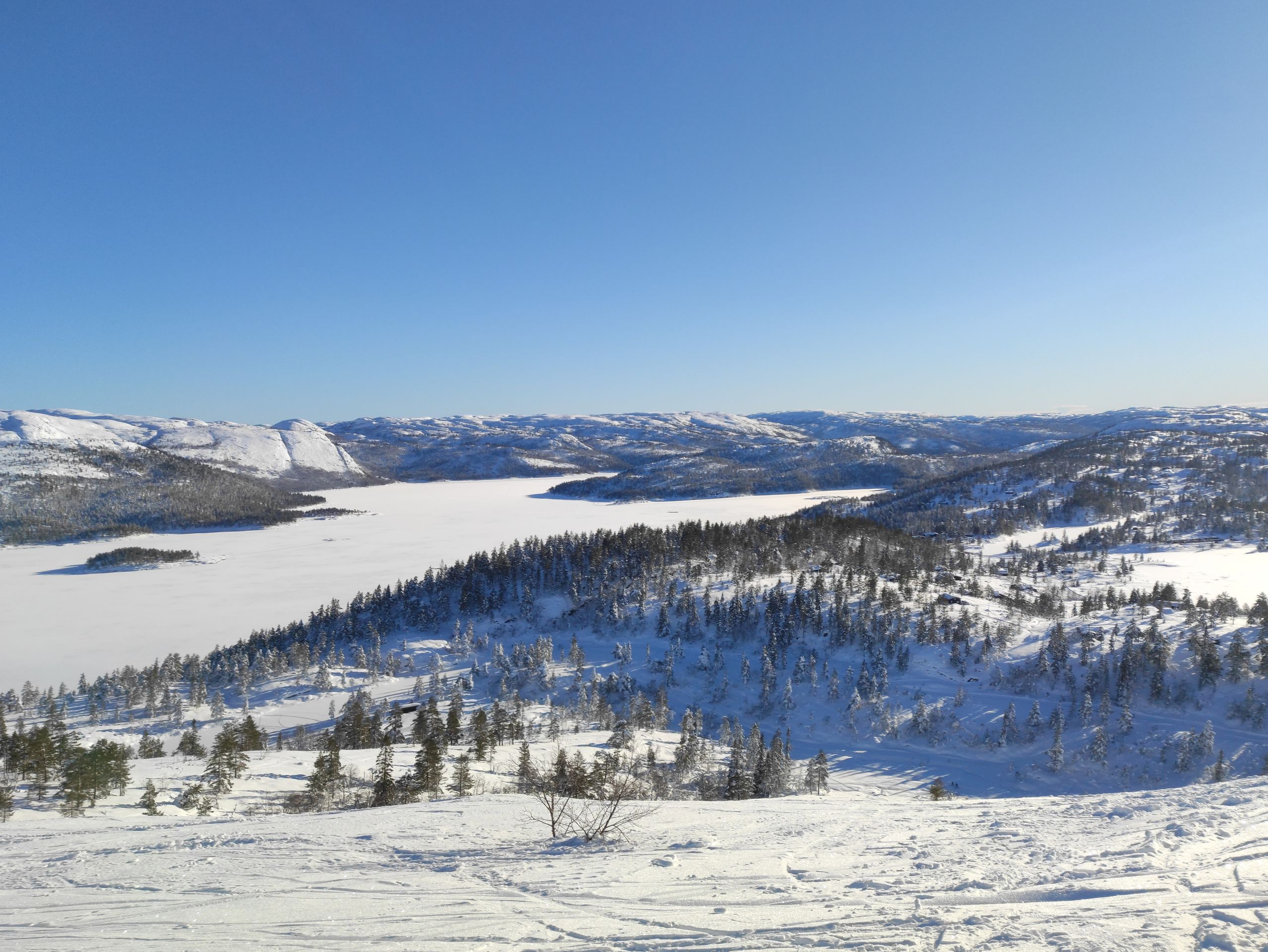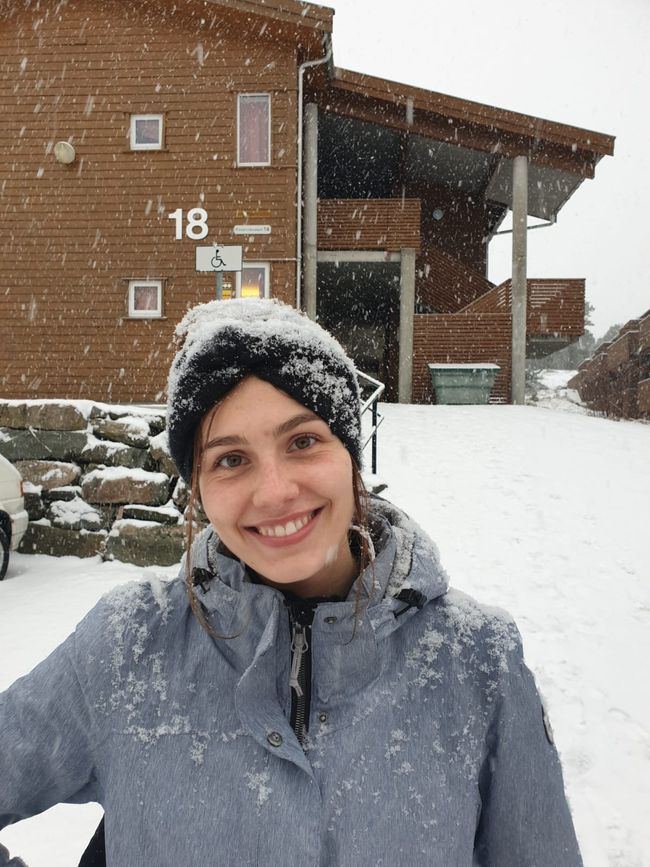Ski Touring: The Great Mountain Cross Country Ski Trip at Hovden
已发表: 24.04.2021
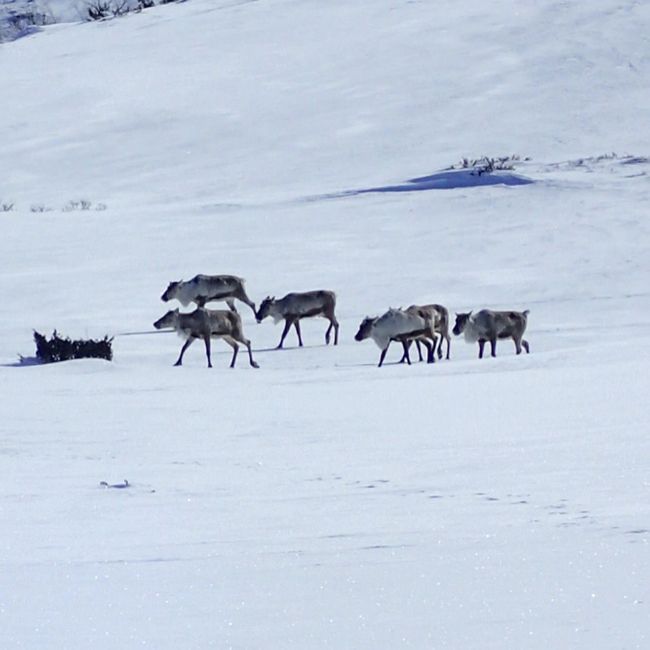
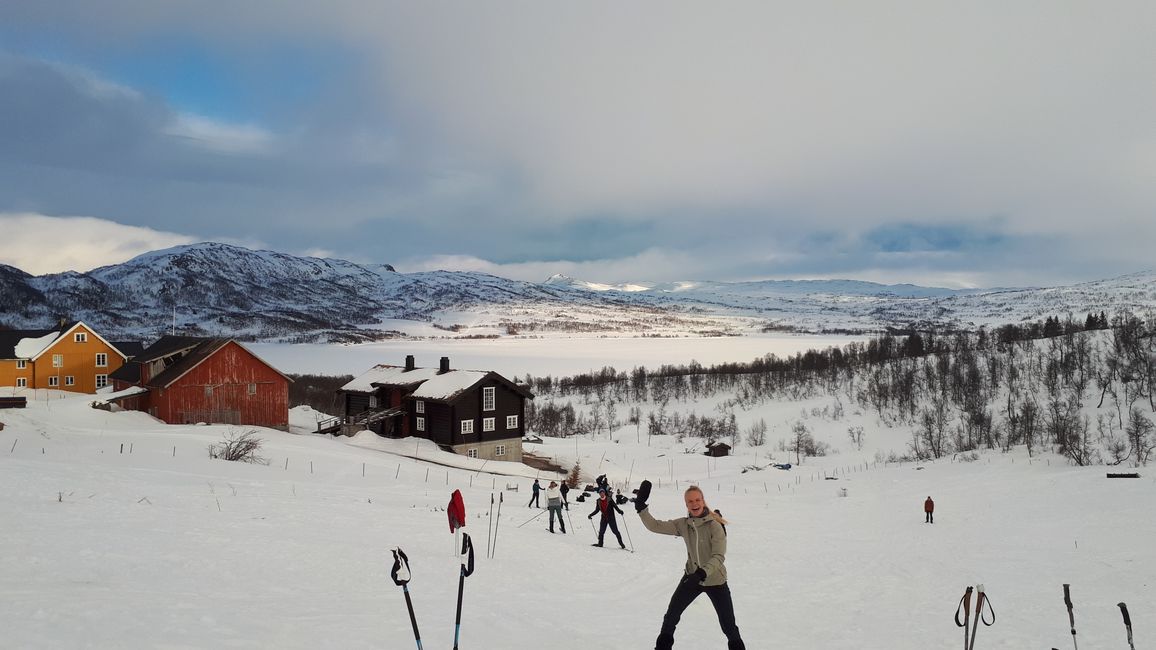
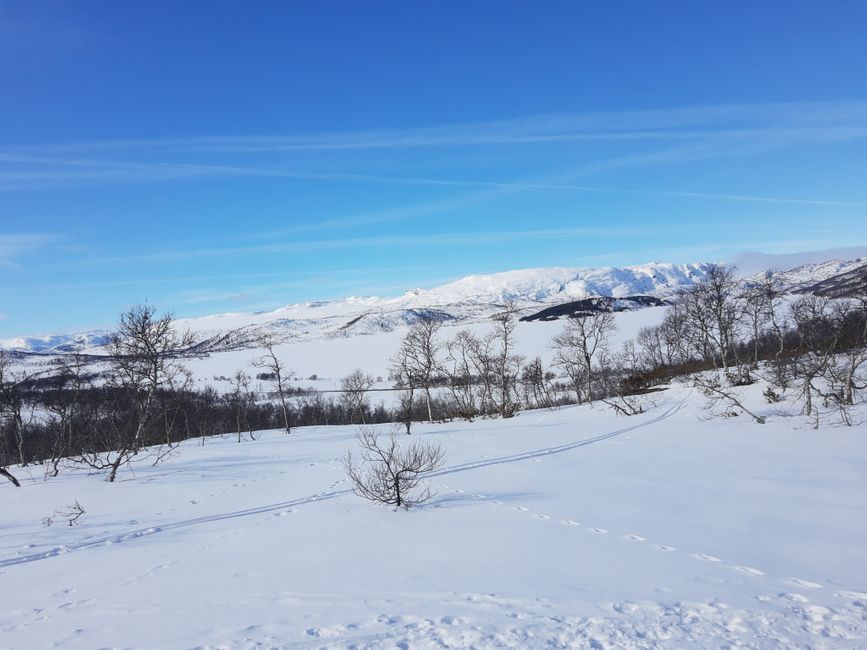
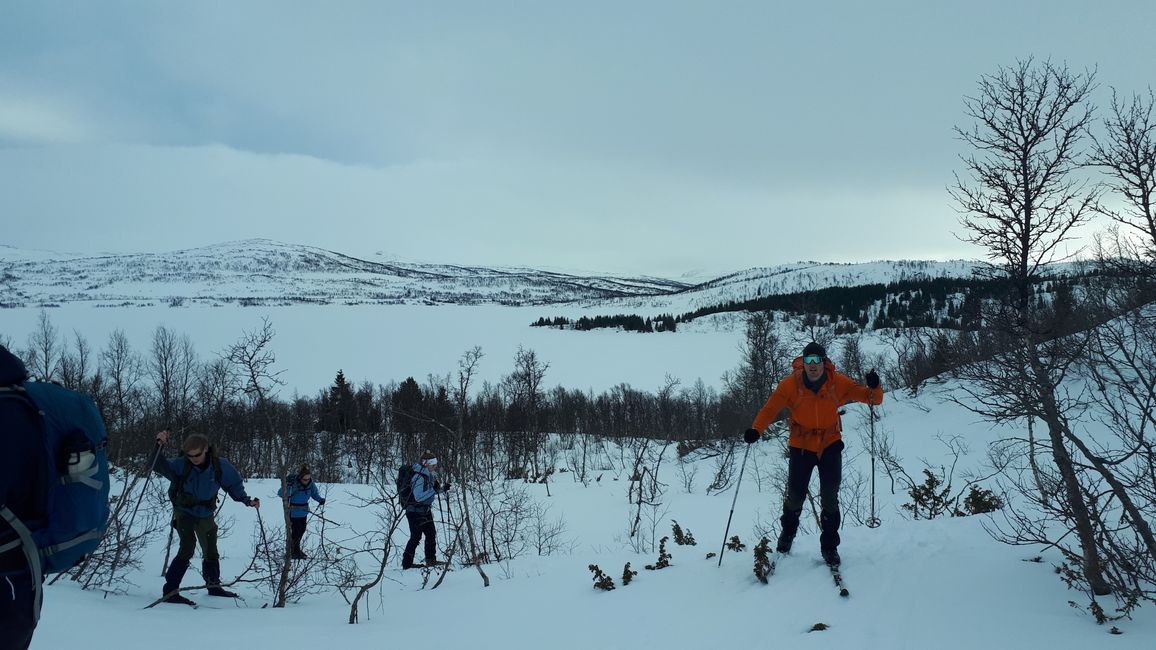
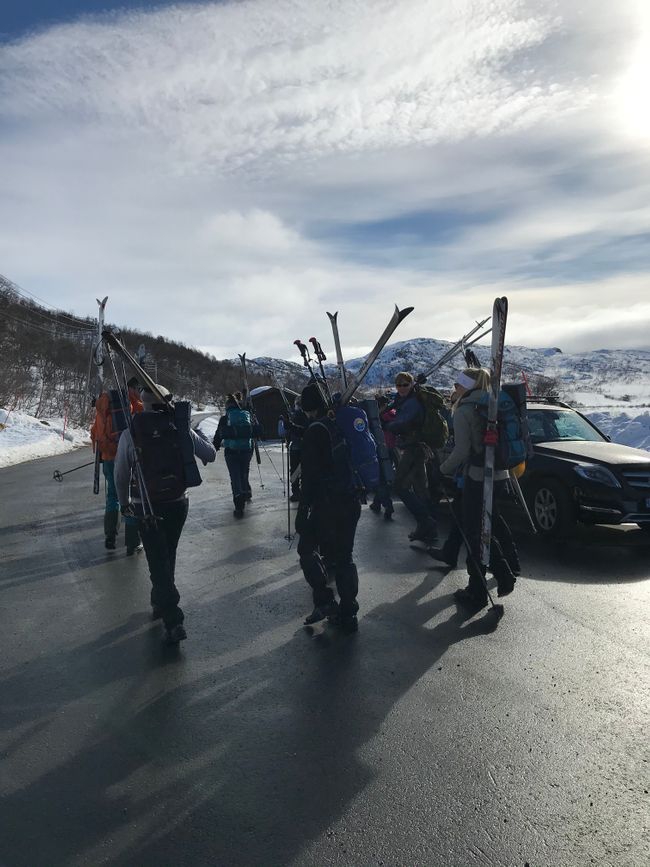
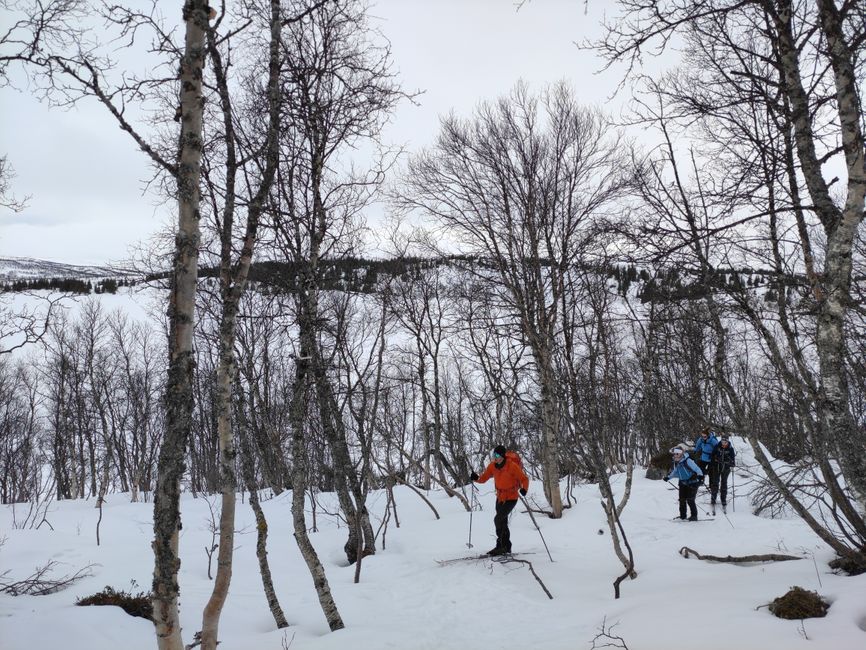
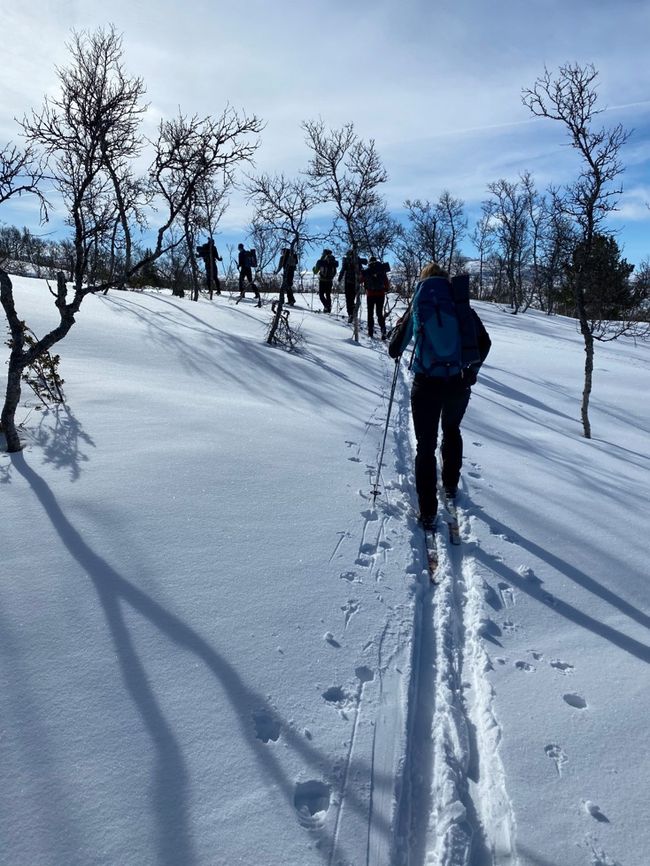
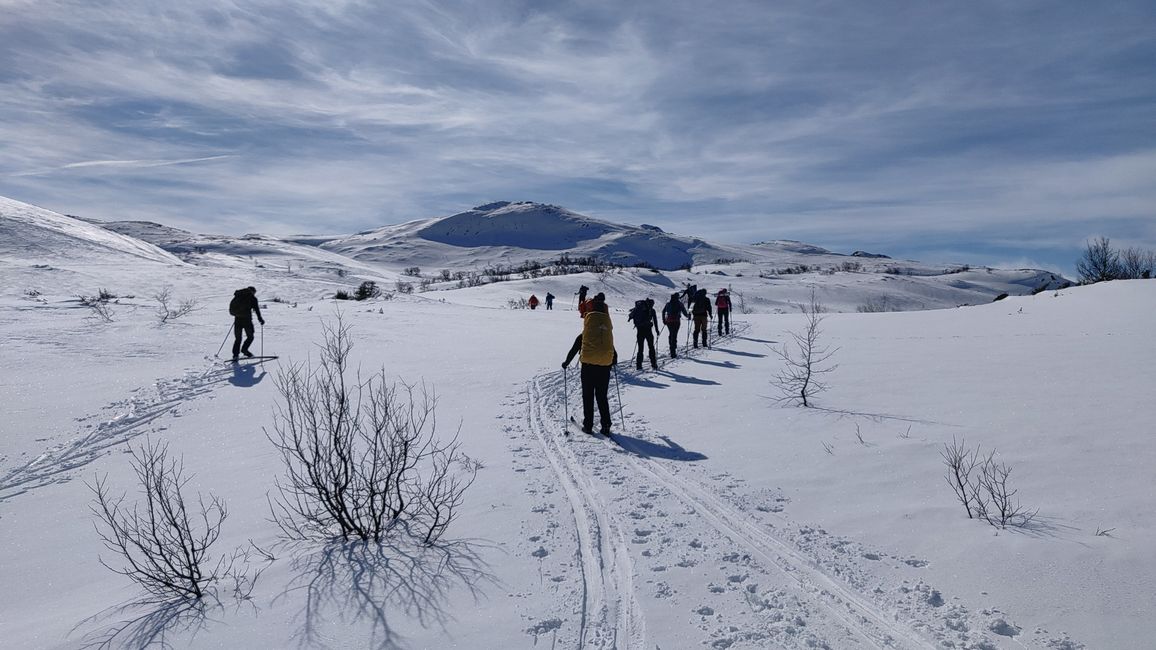
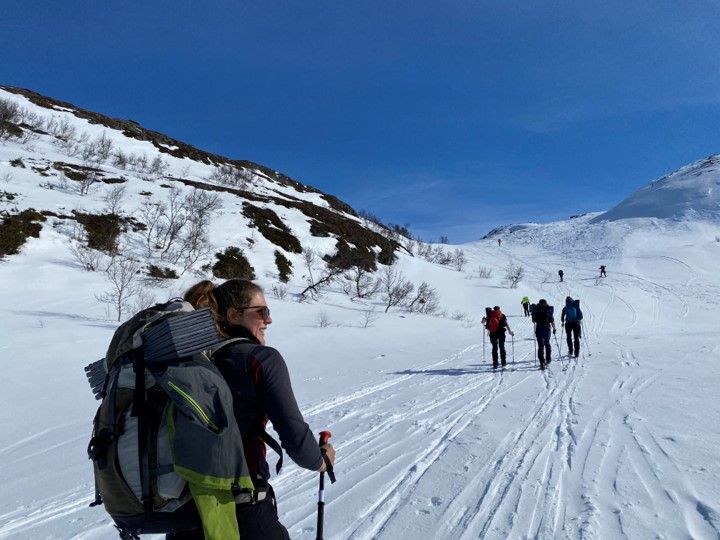
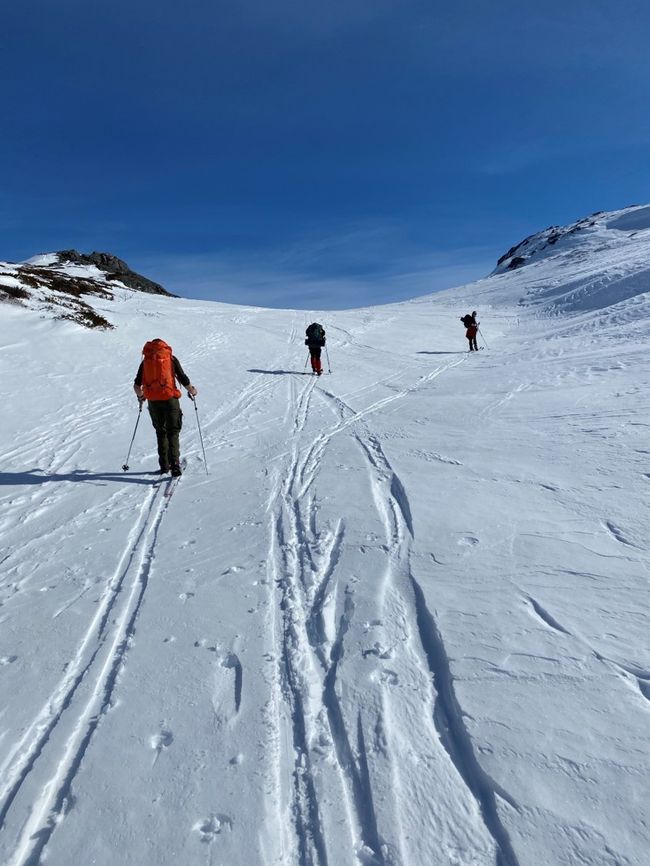
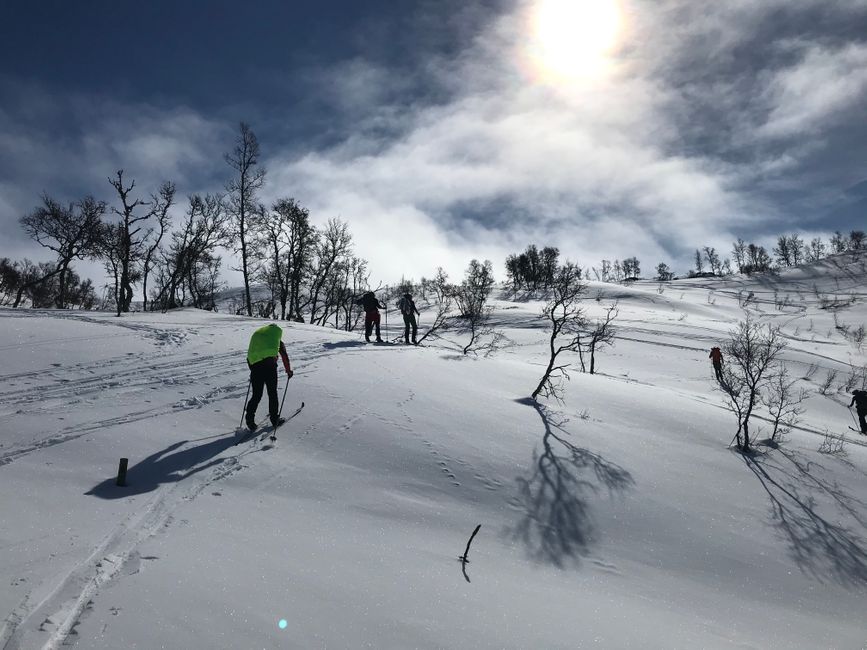
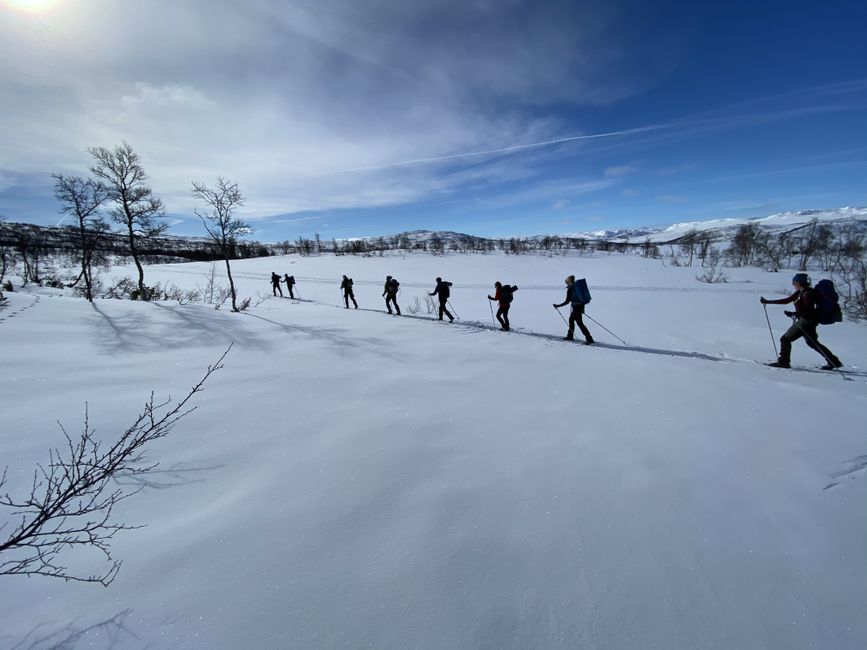
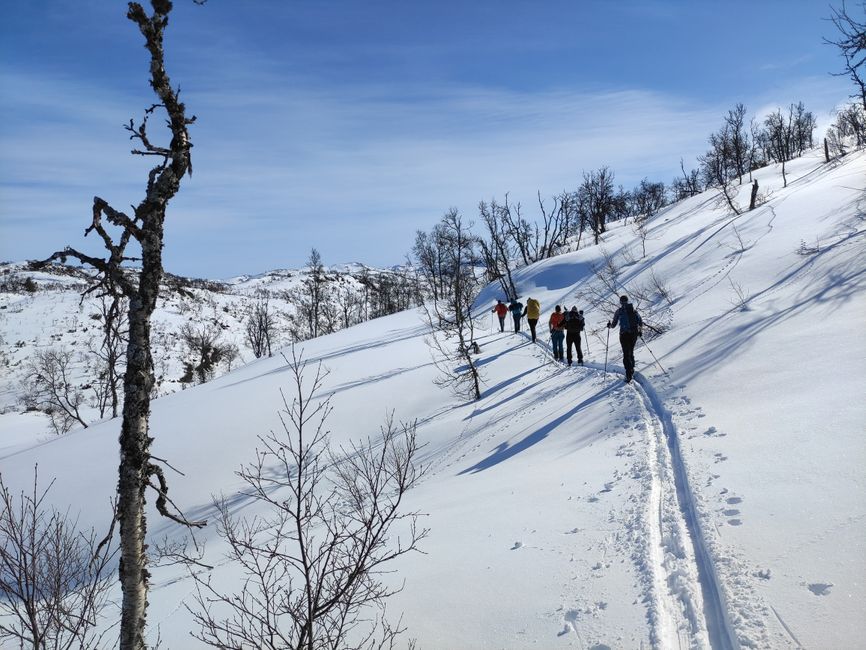
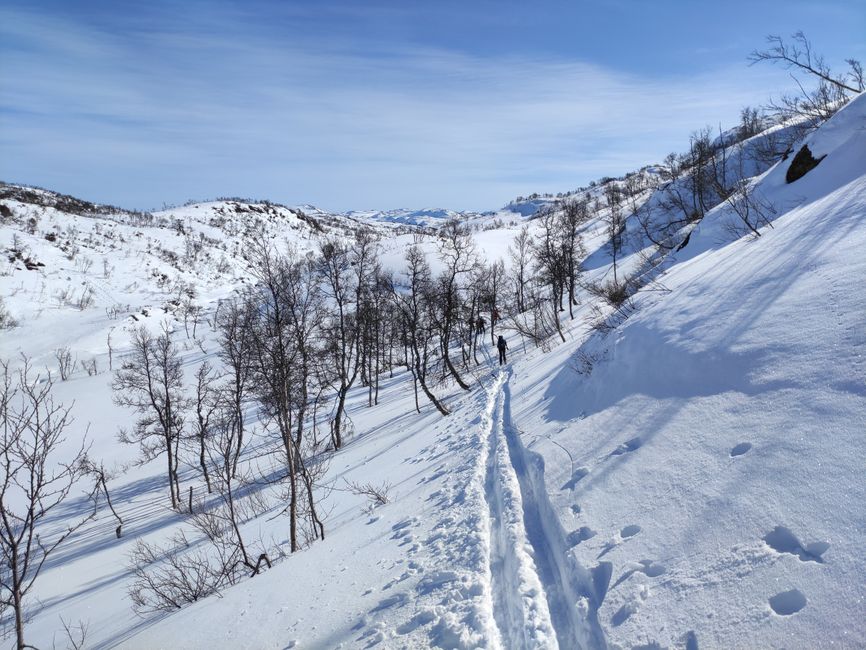
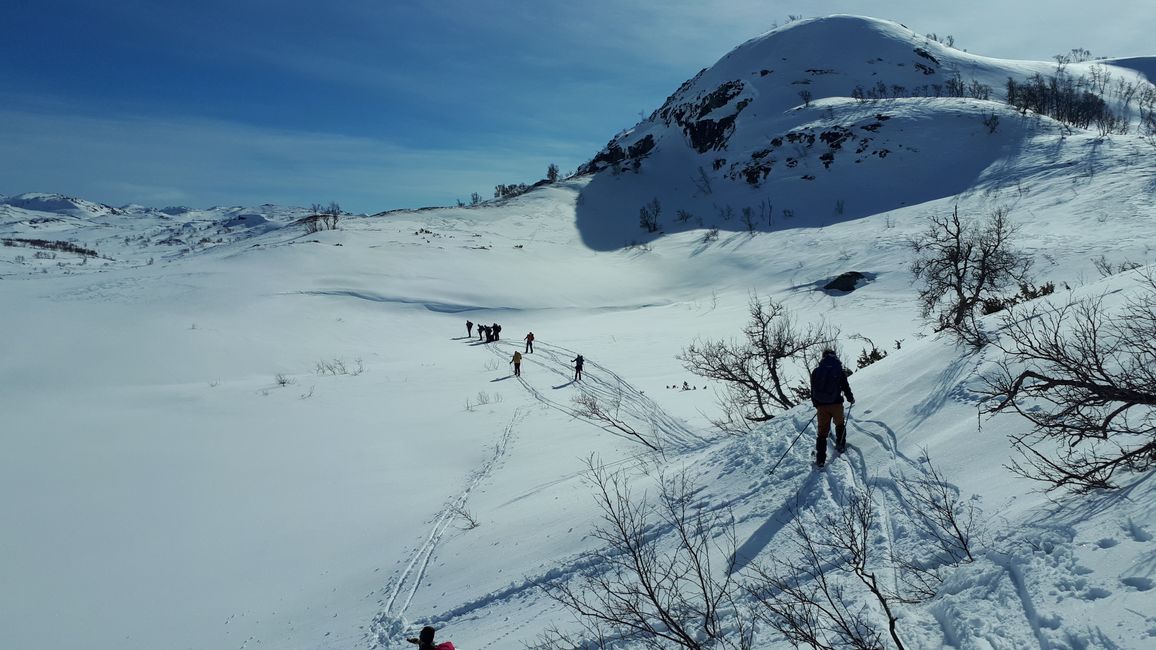
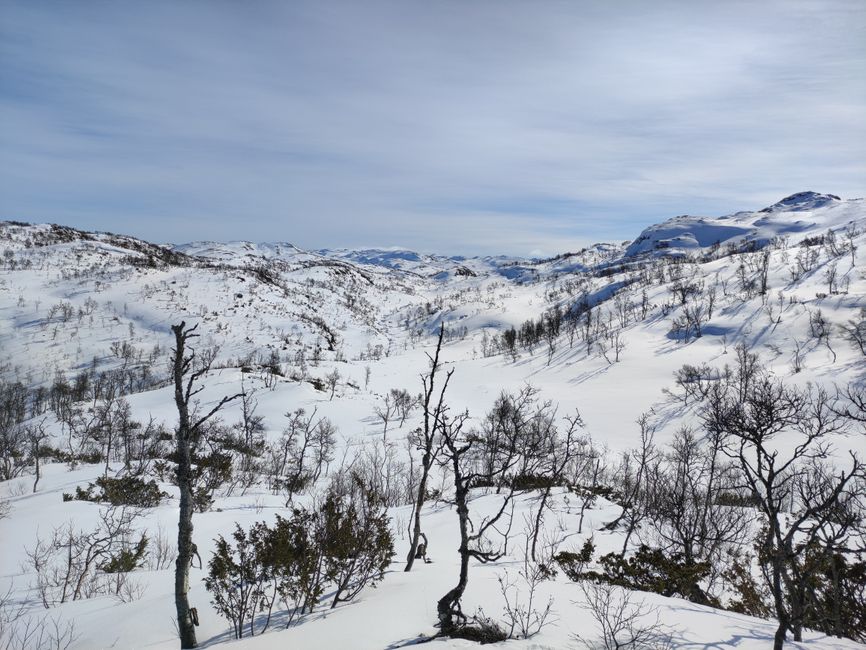
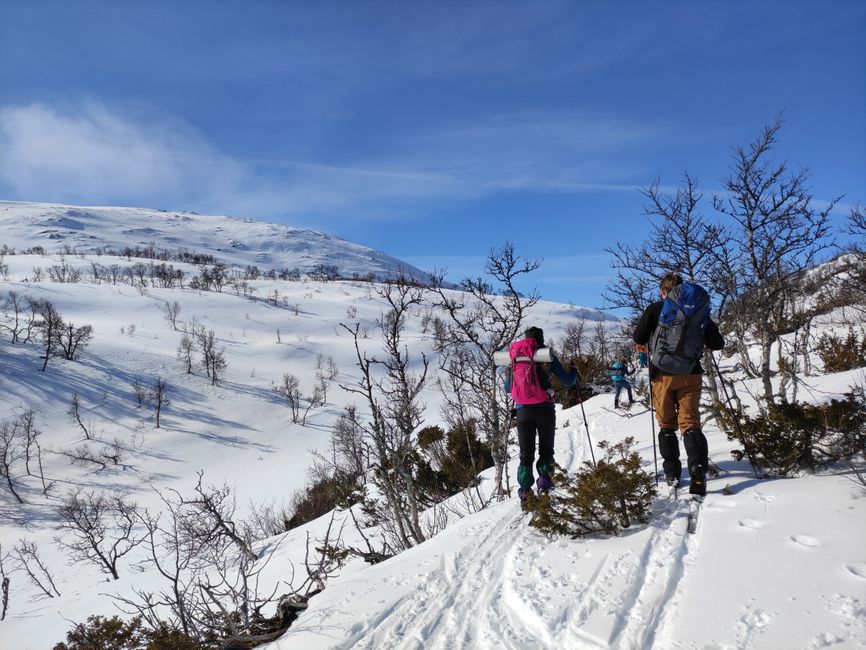
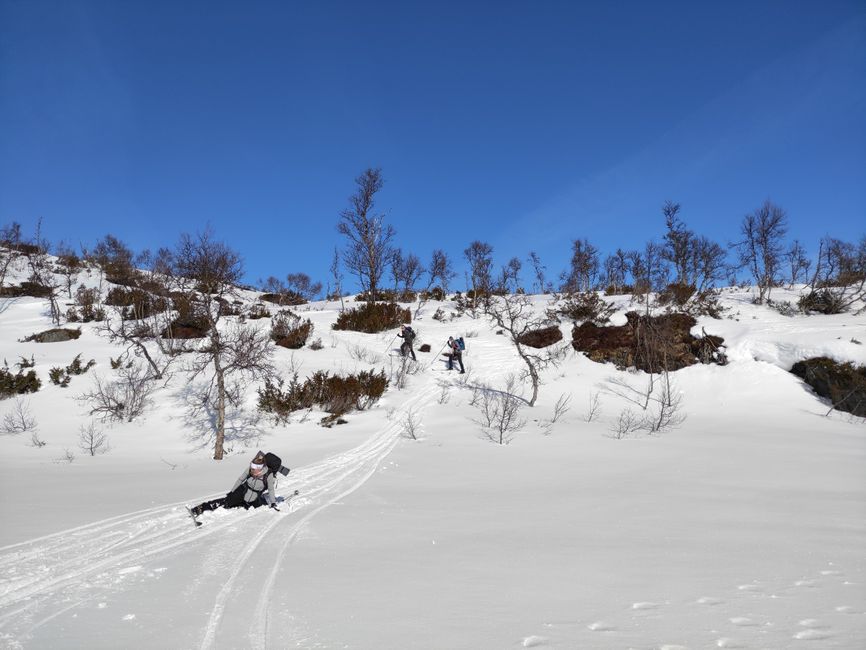
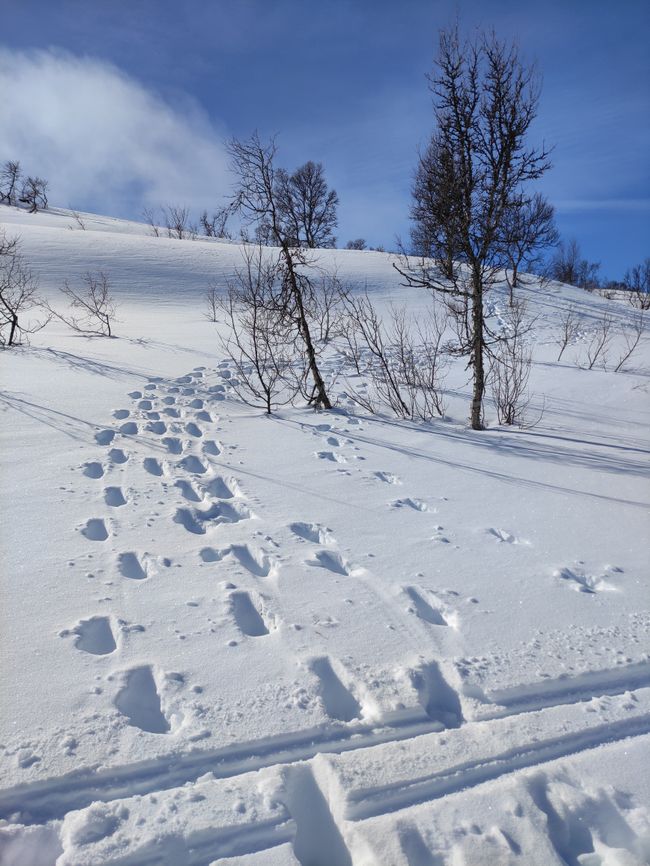
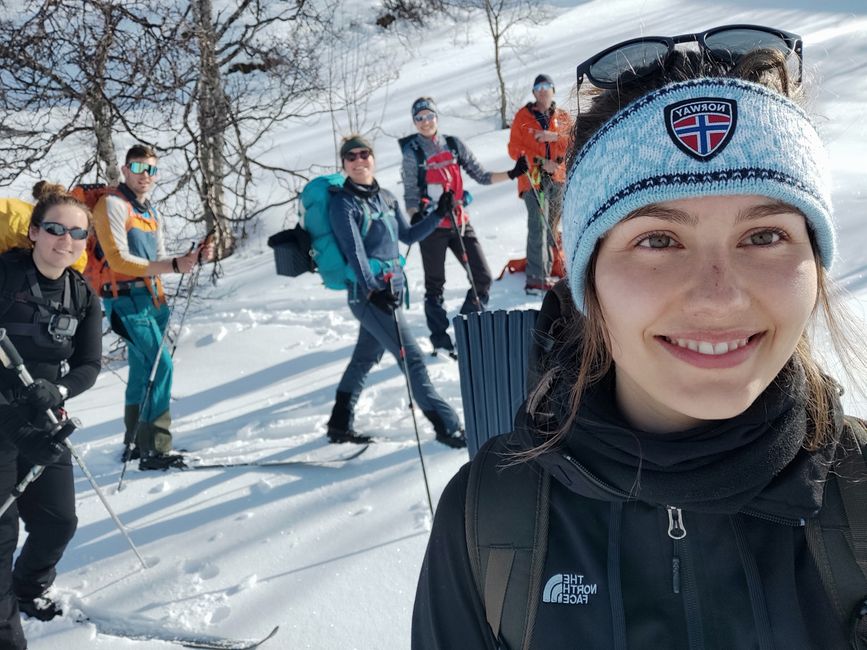
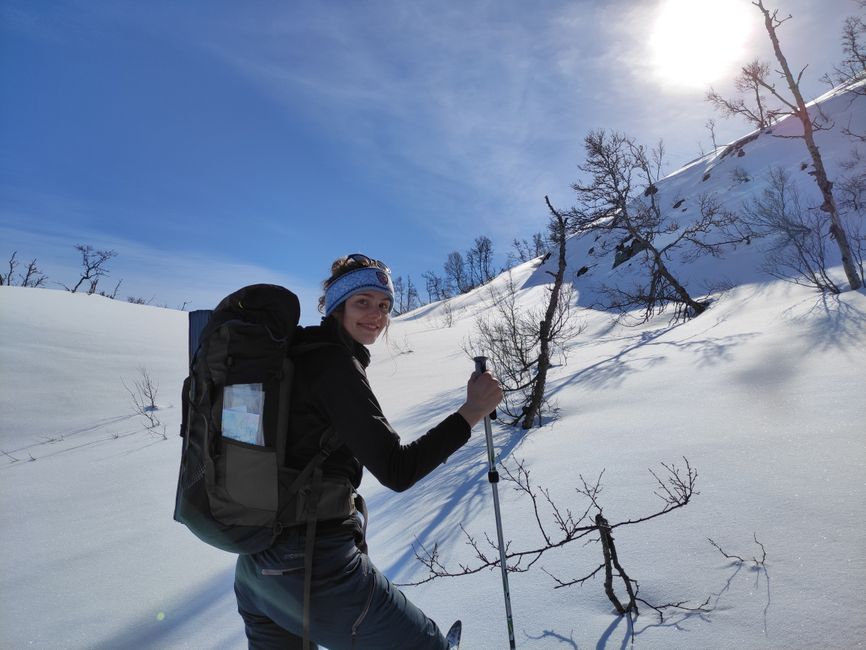
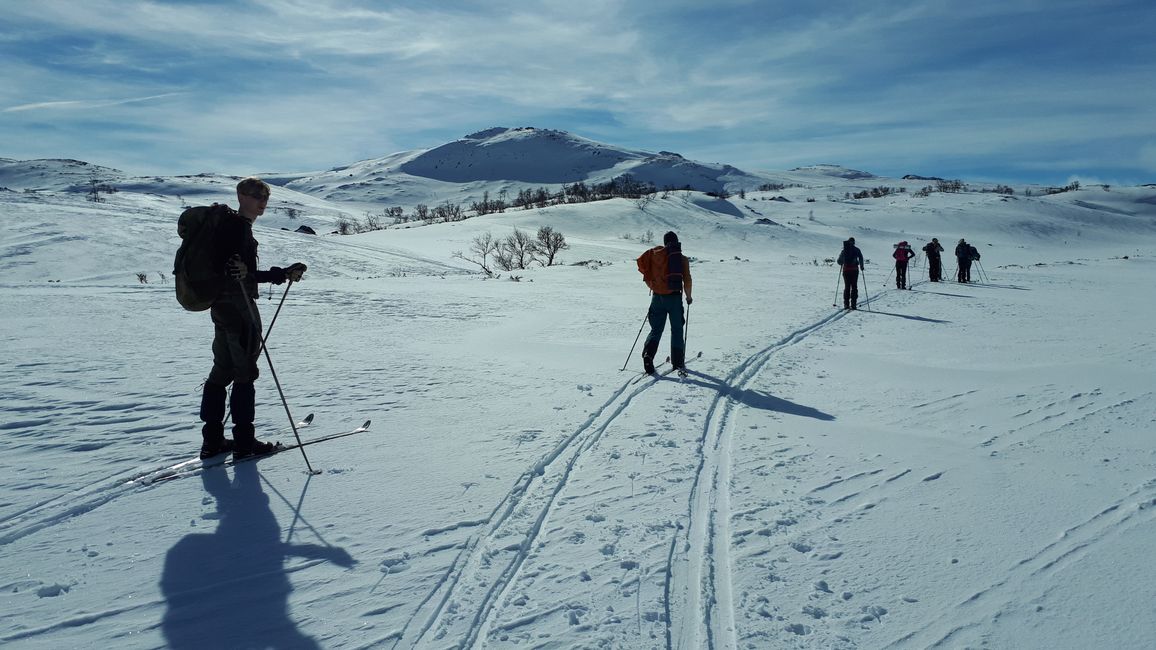
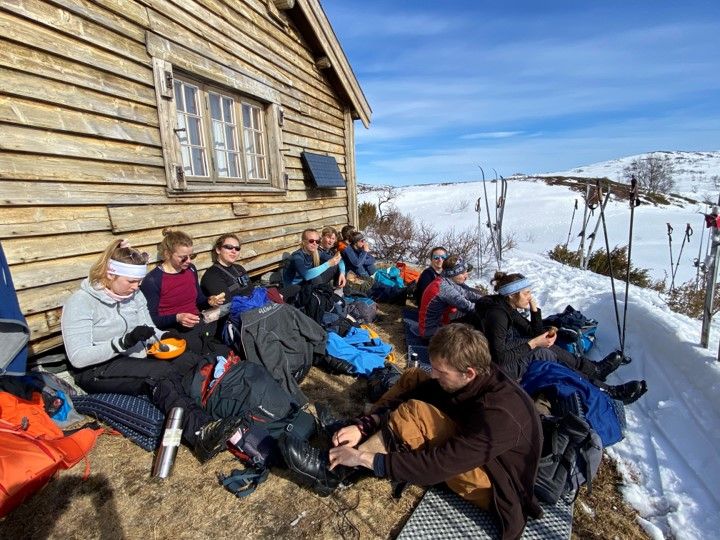
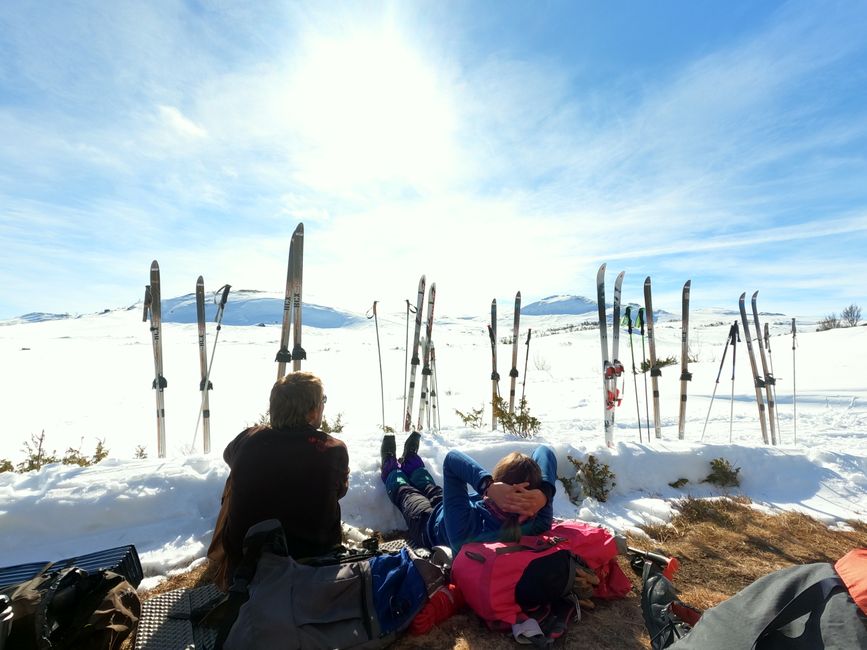
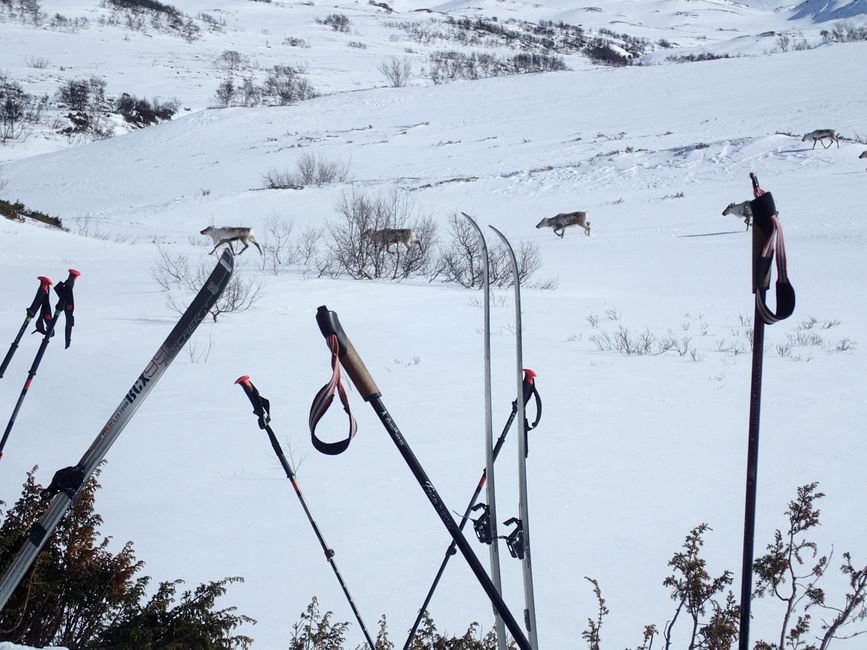
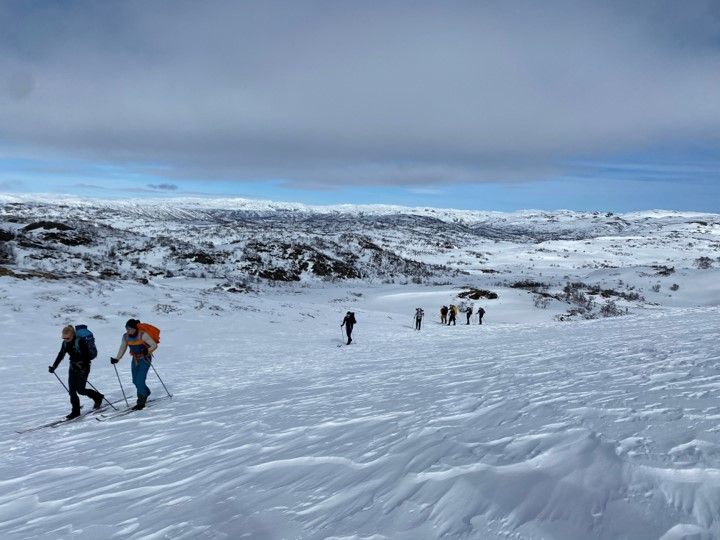
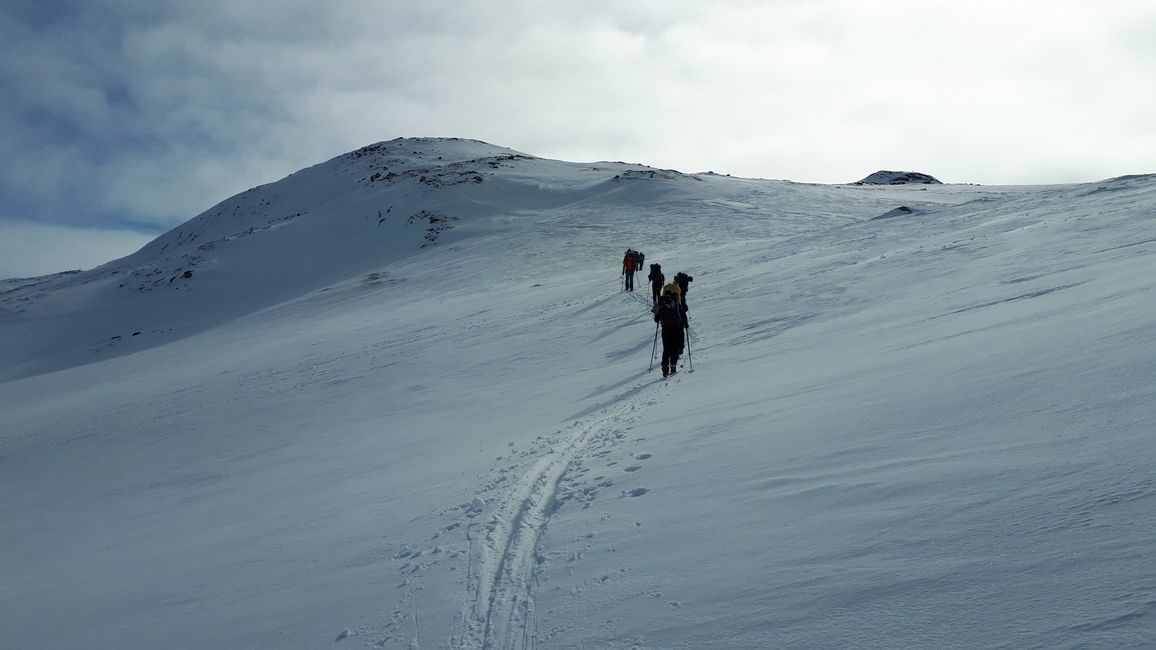
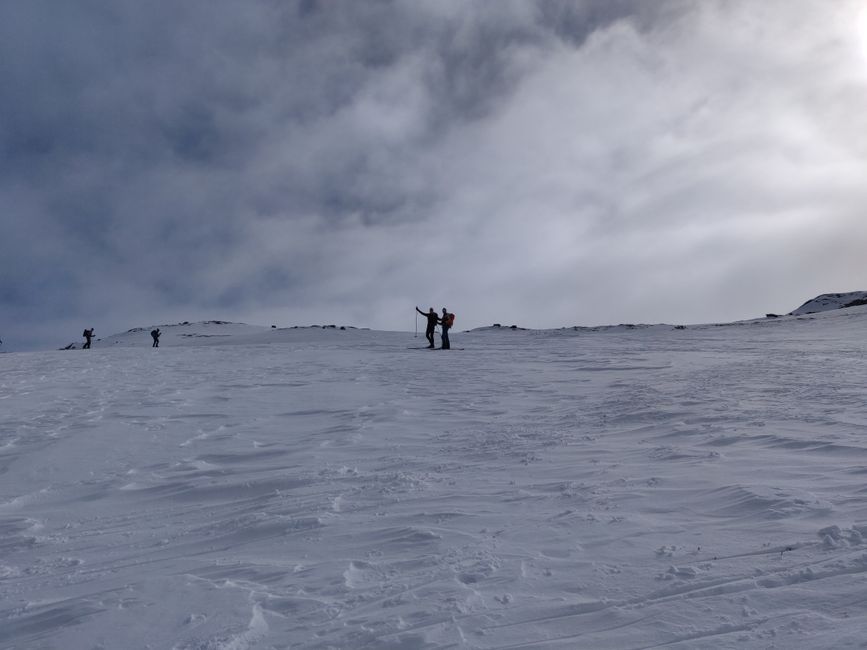
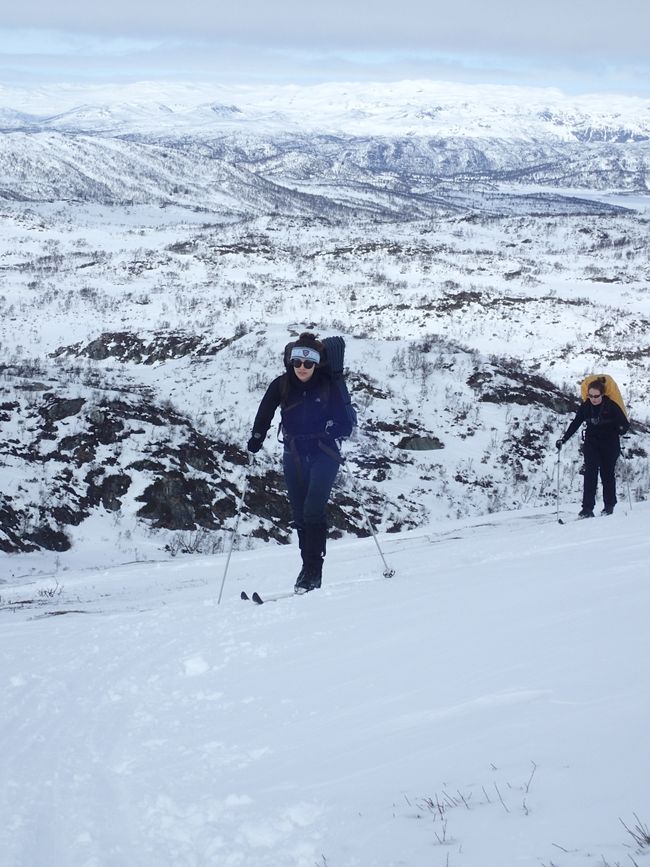
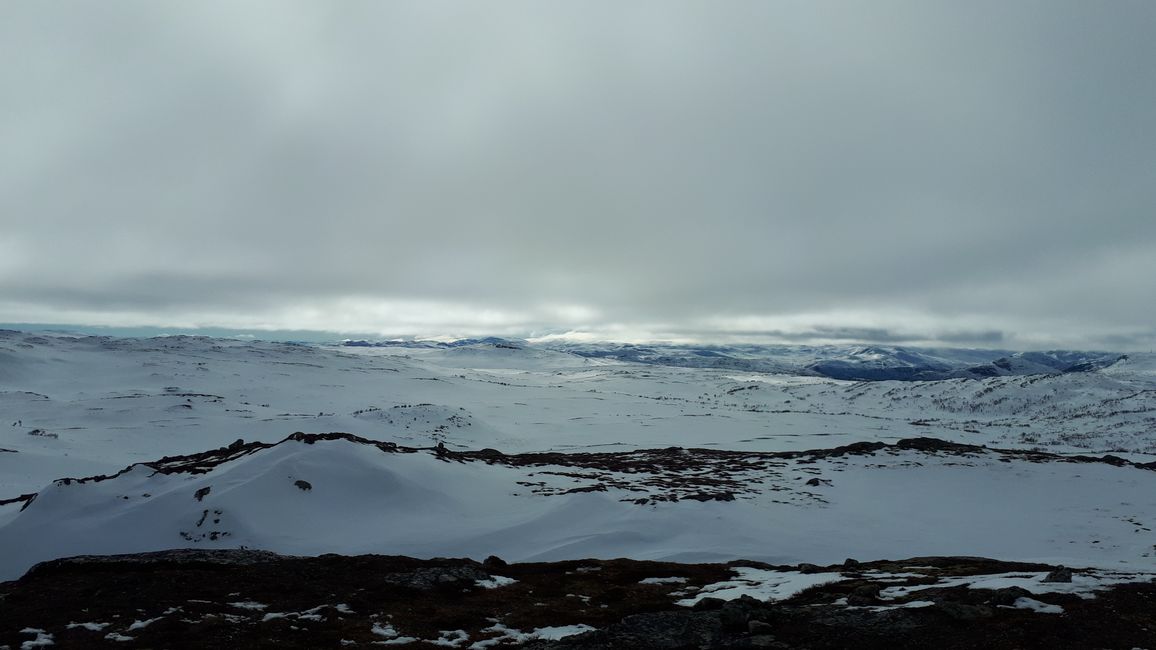
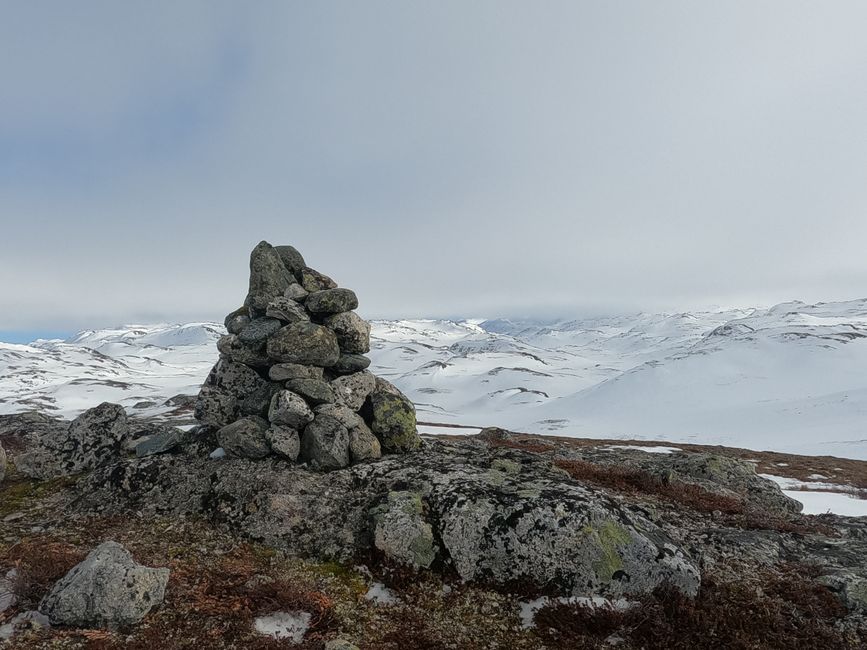
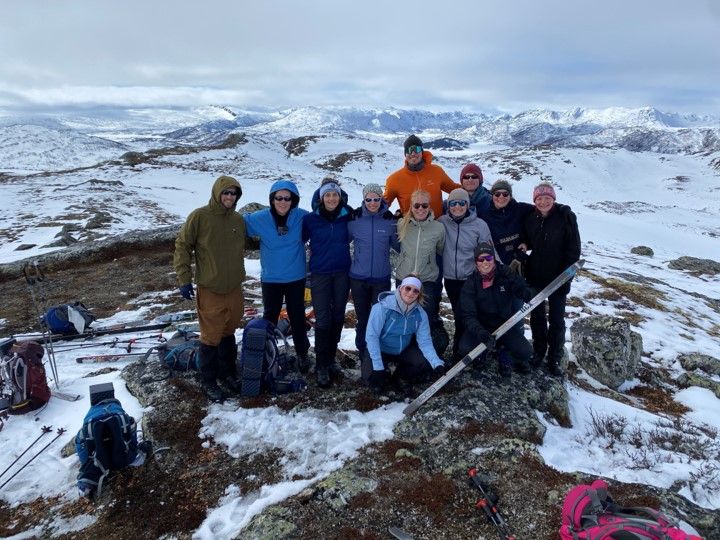
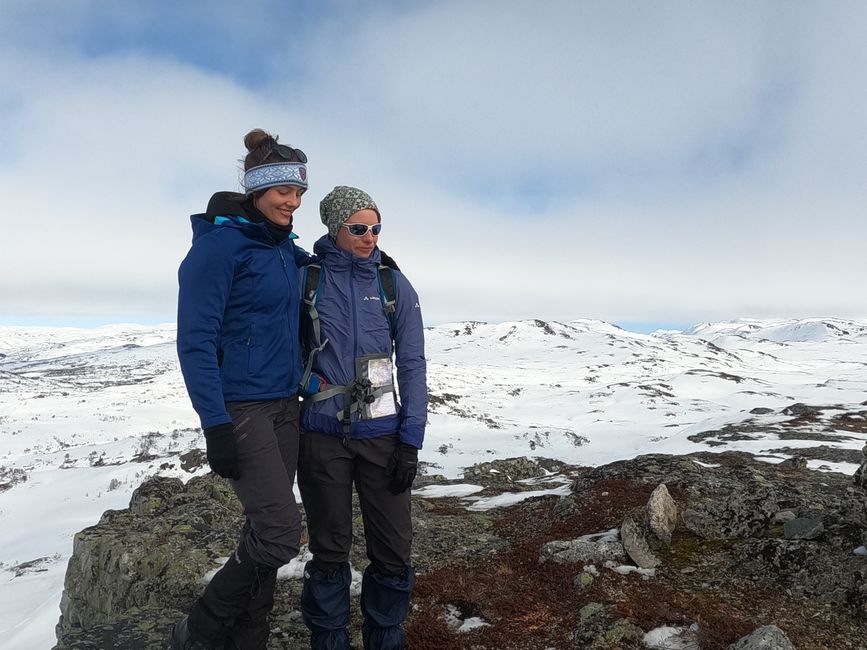
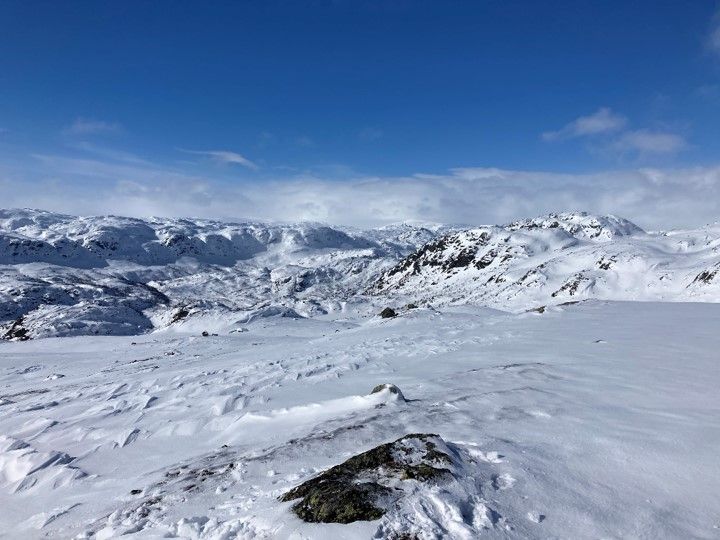
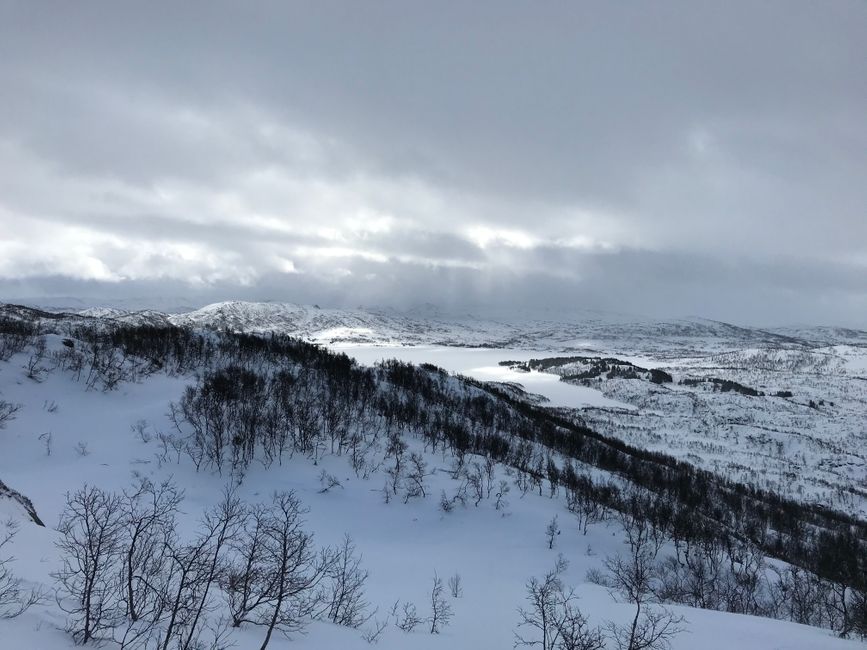
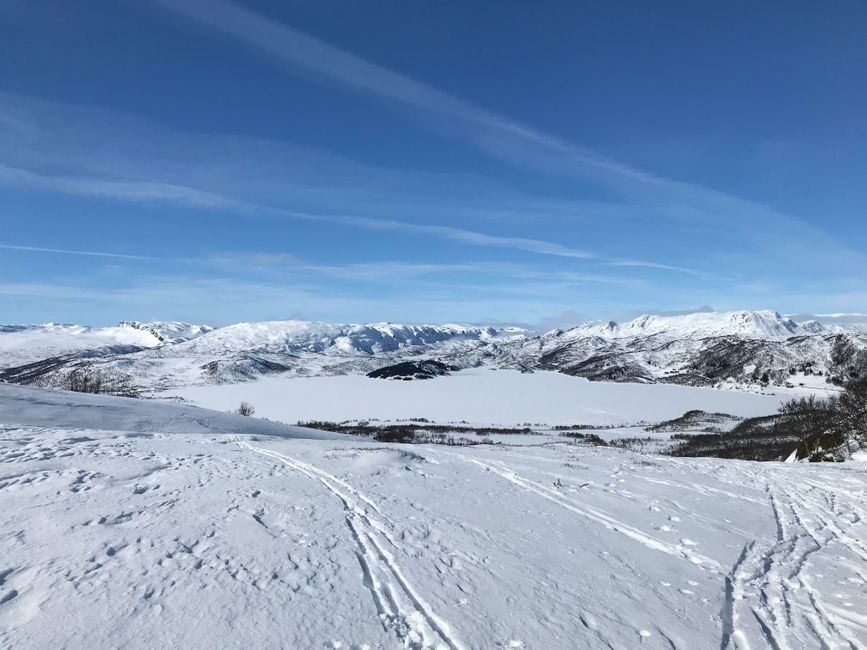
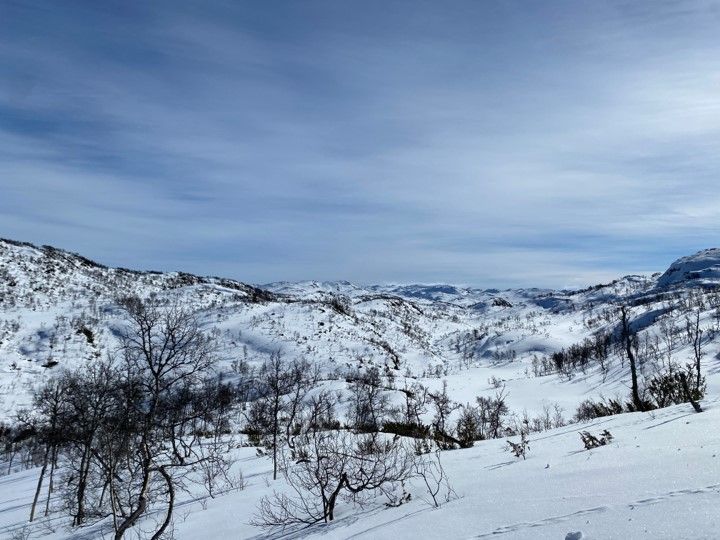
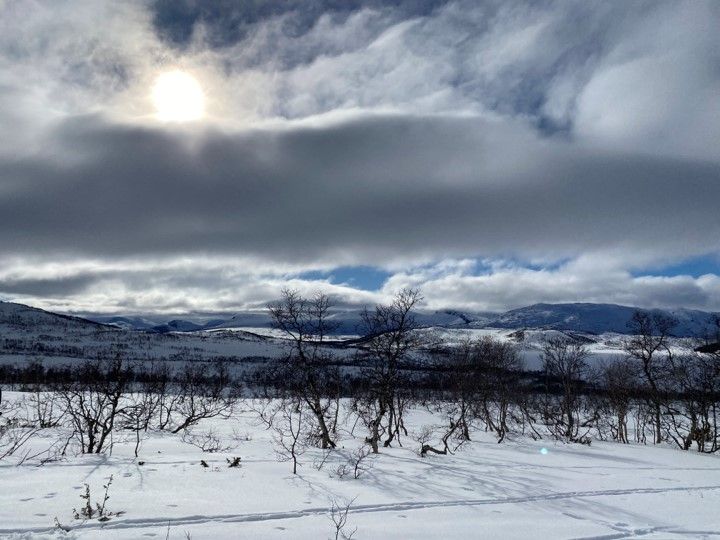
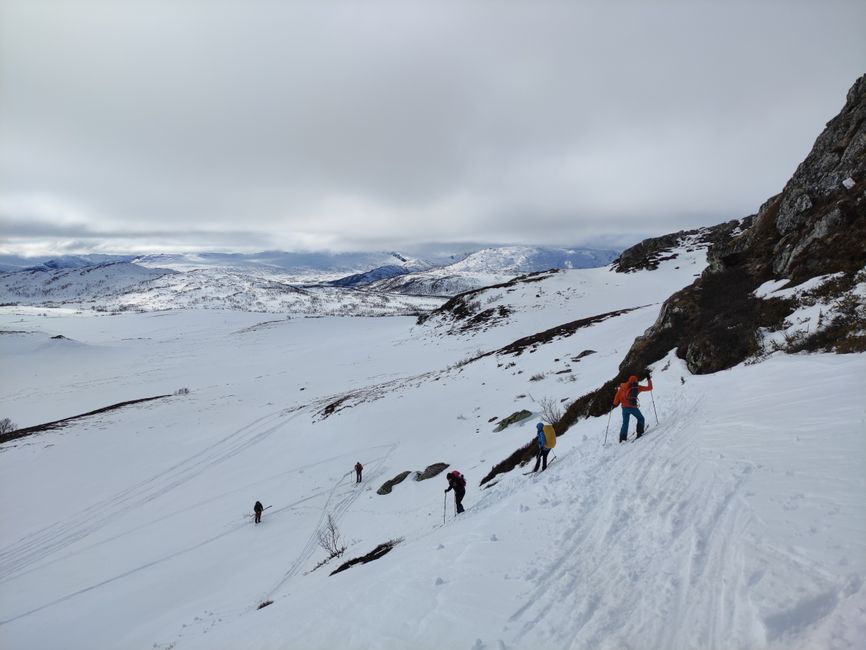
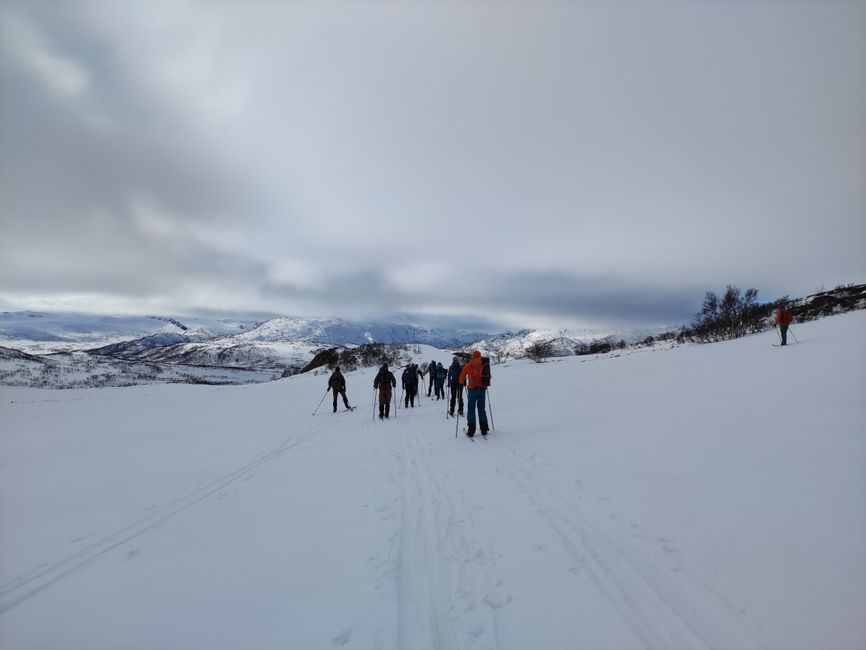
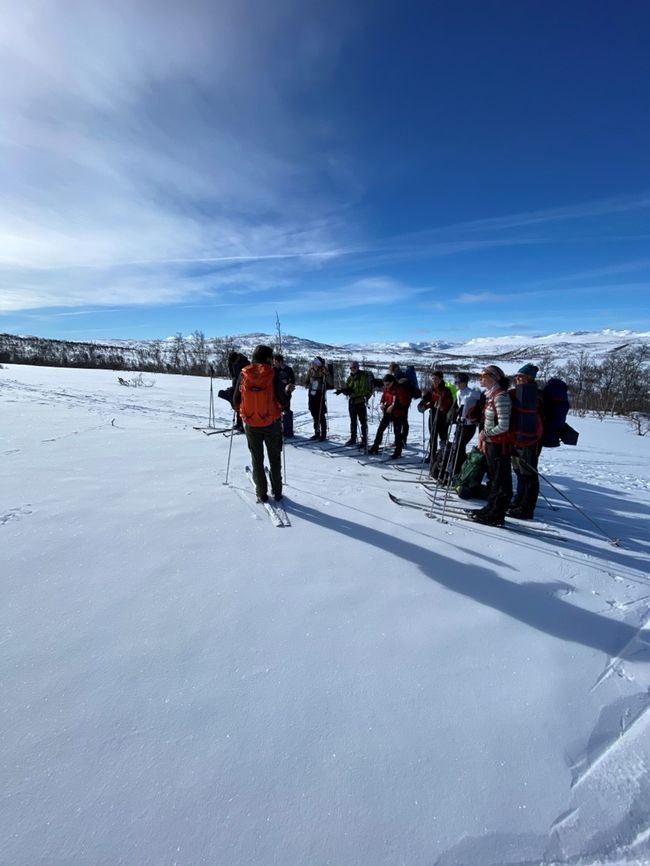
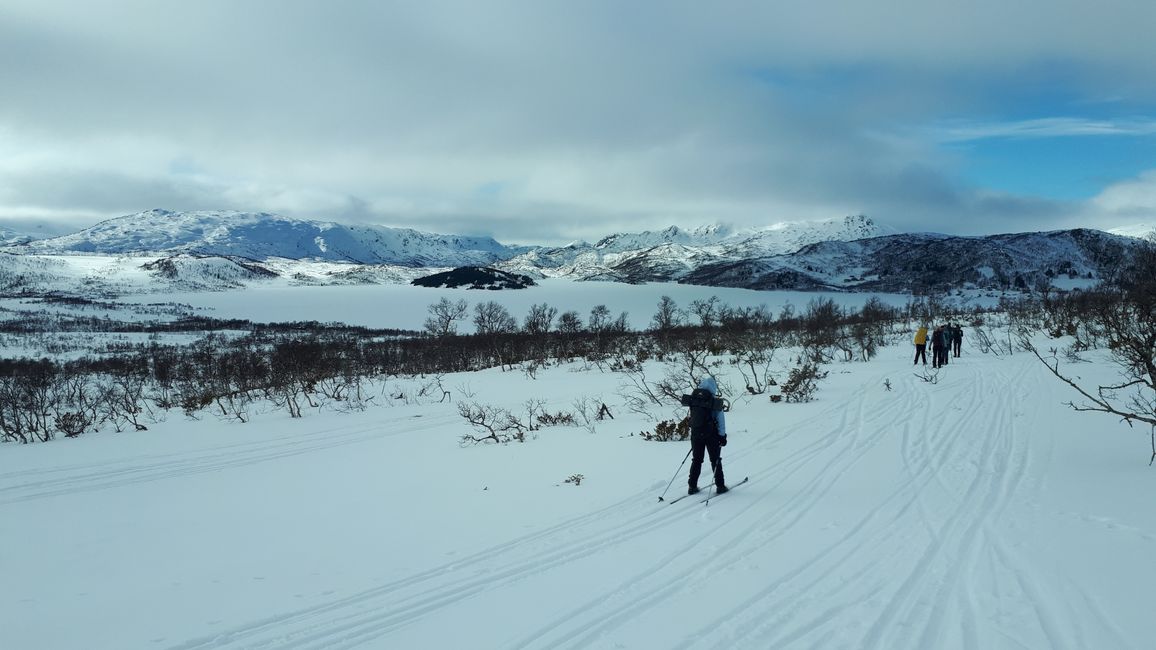
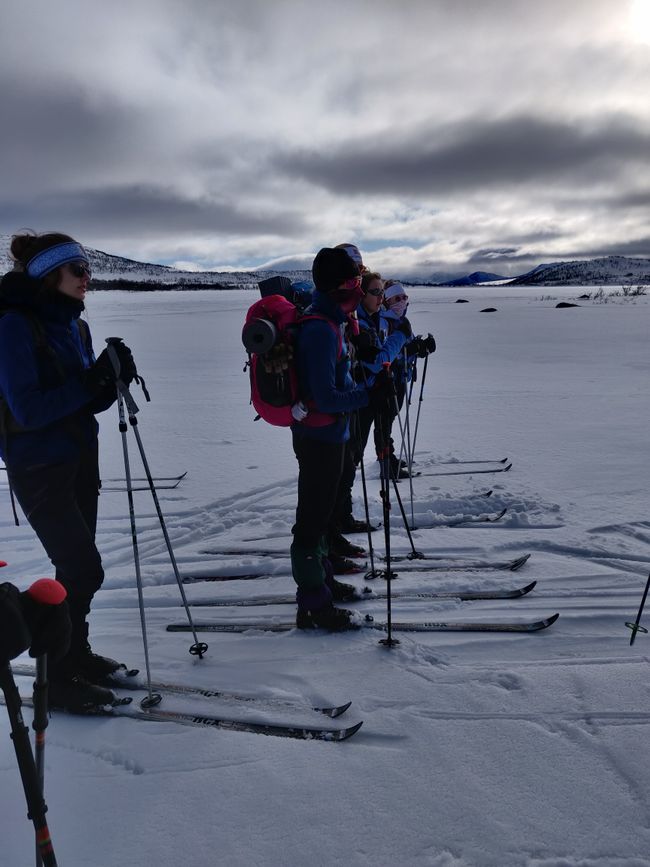
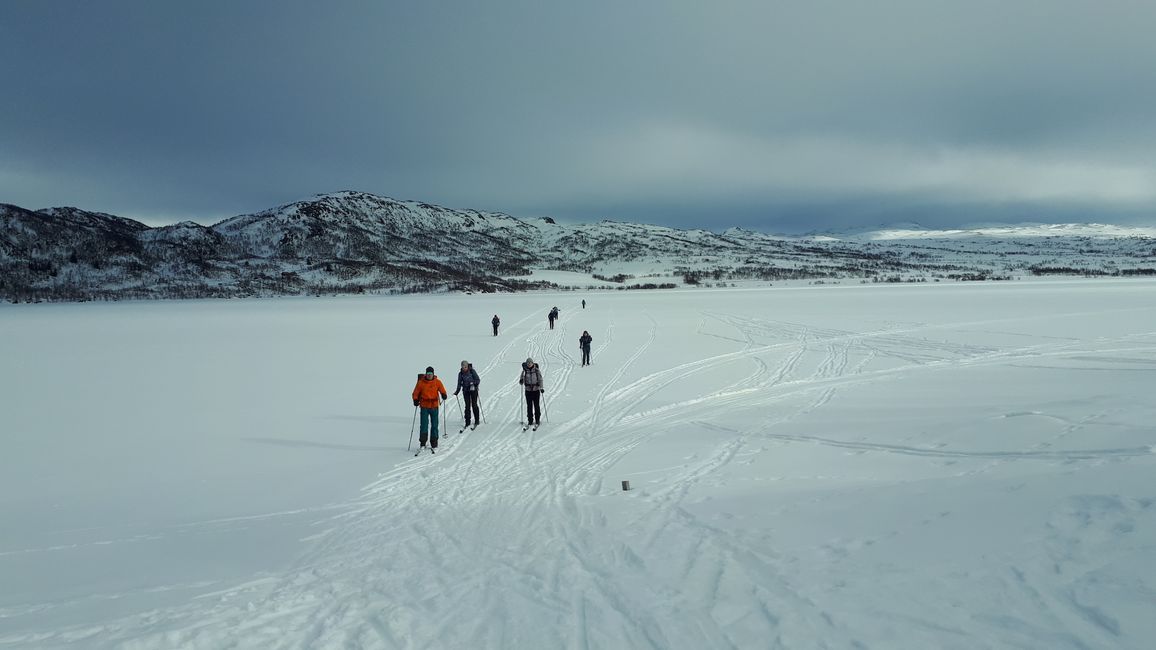
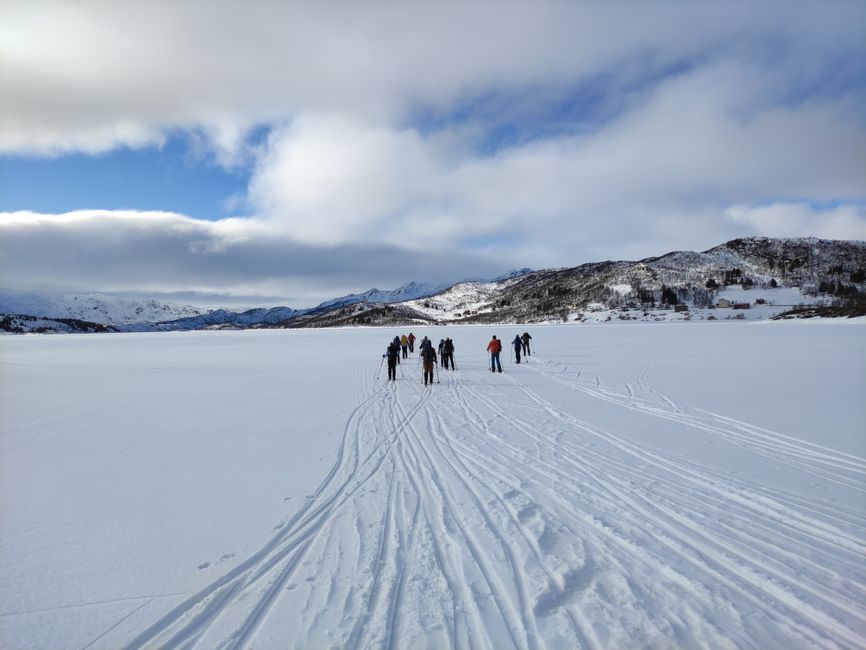
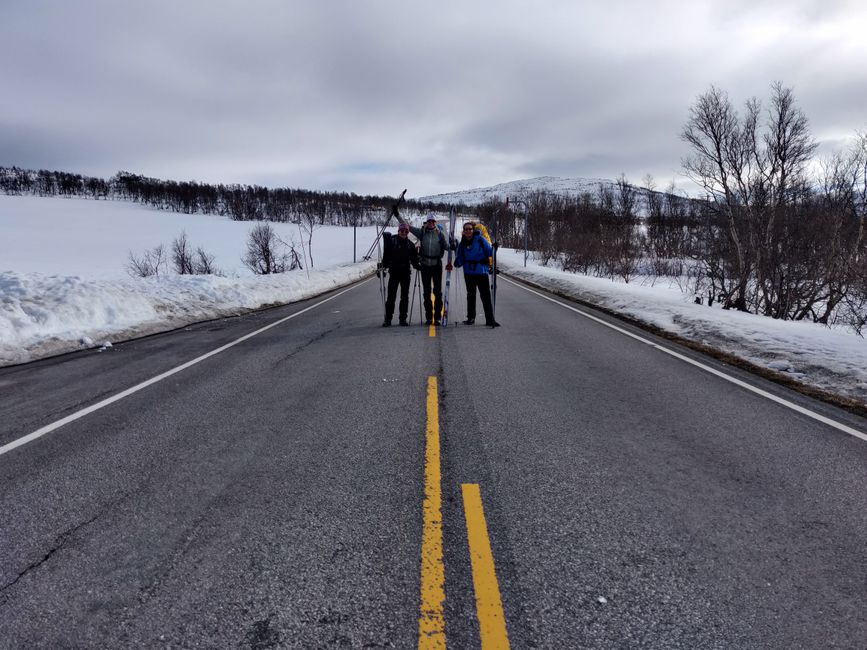
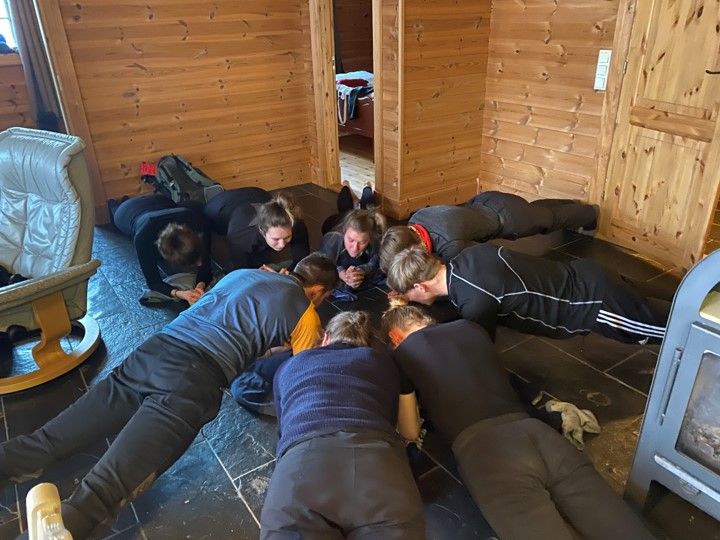
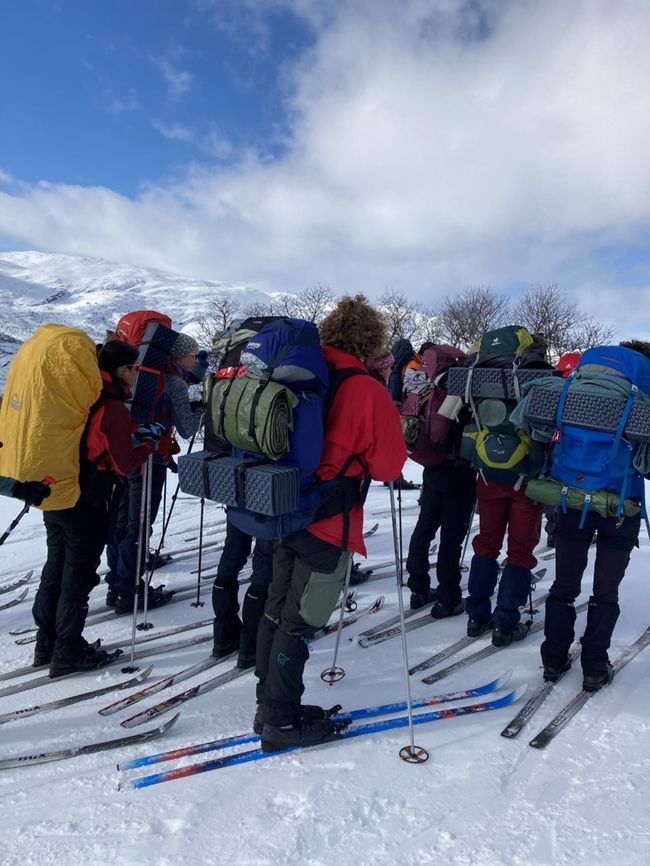
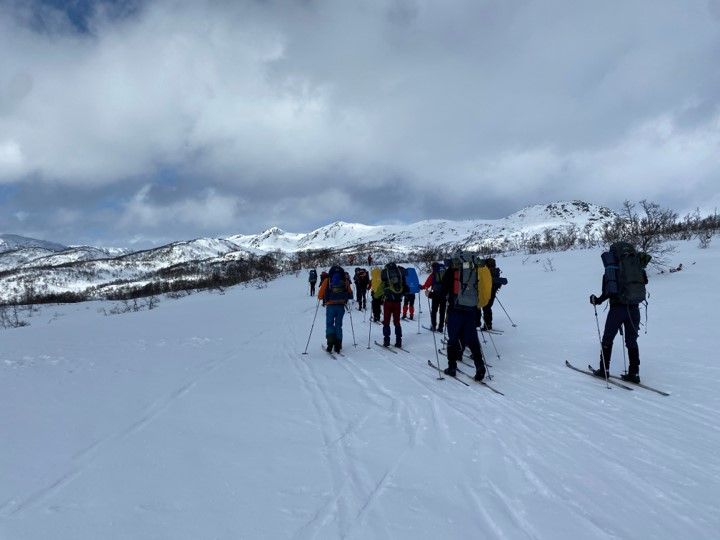
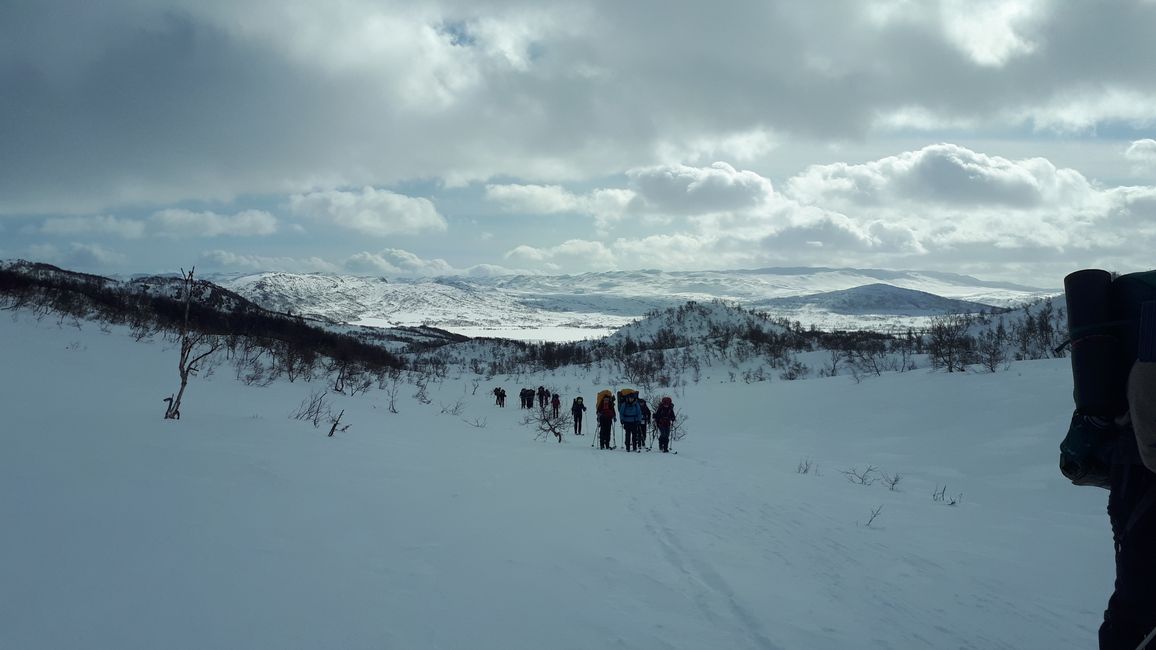
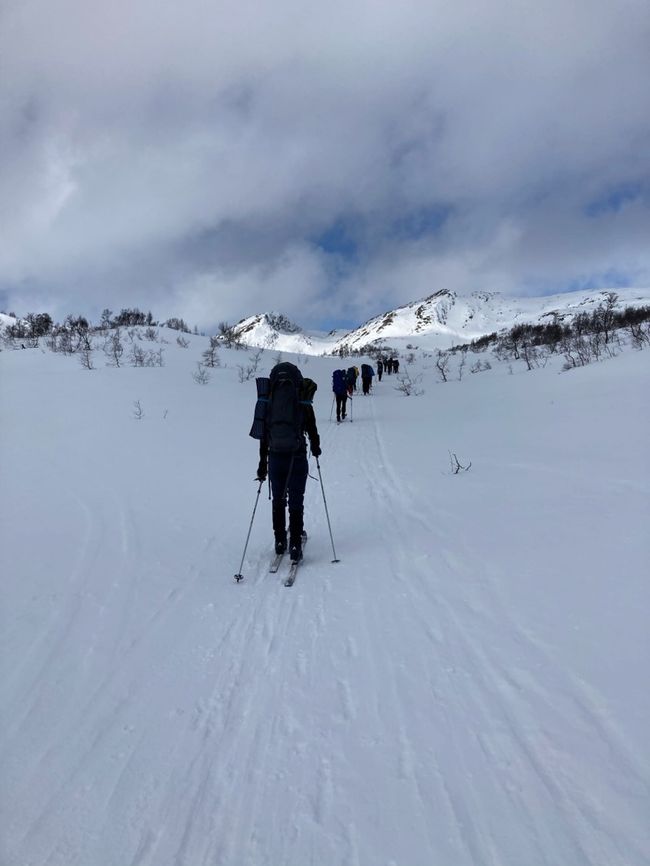
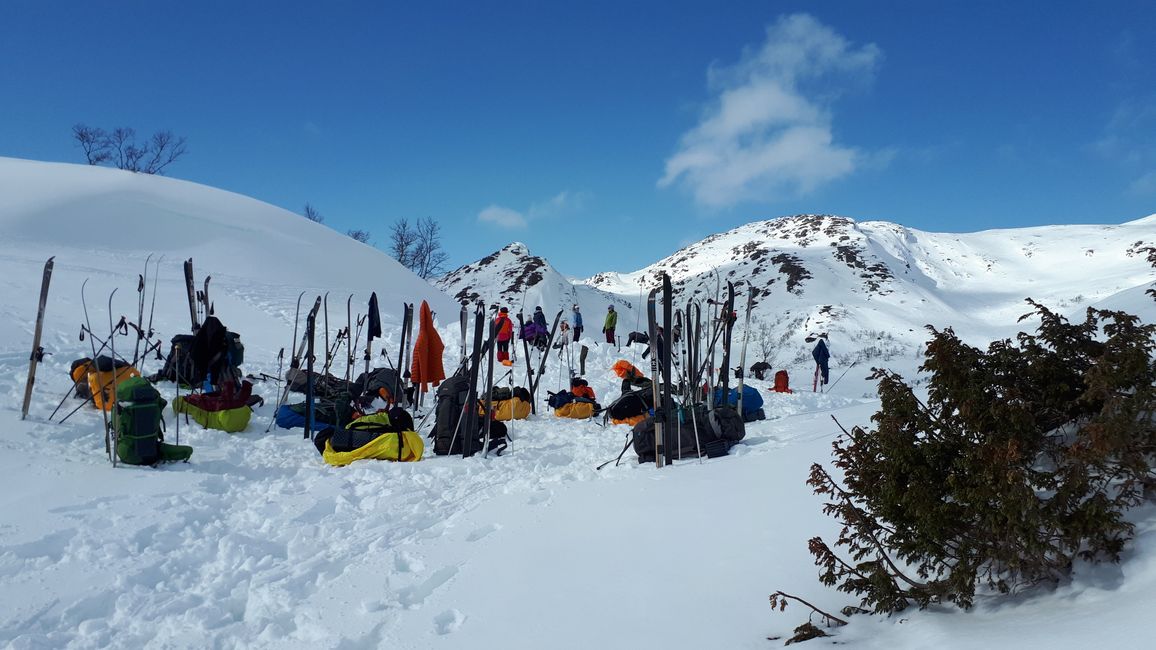
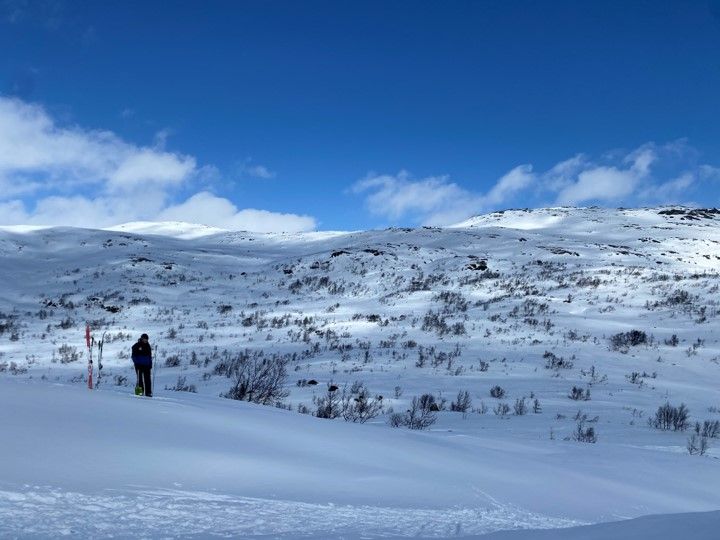
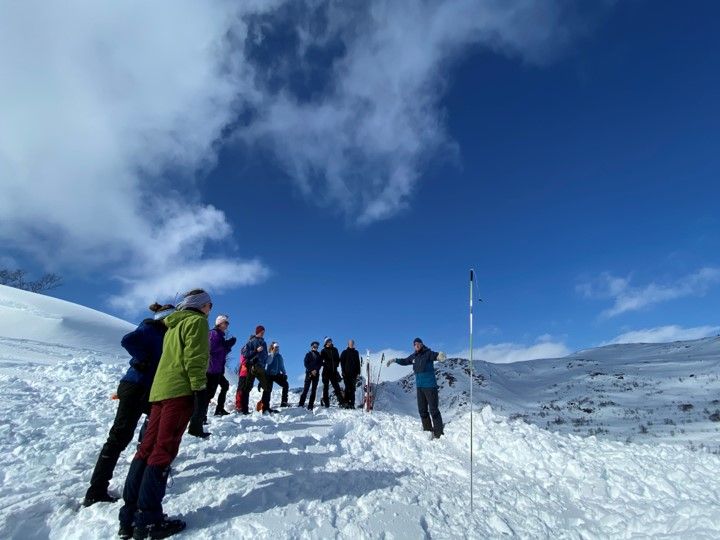
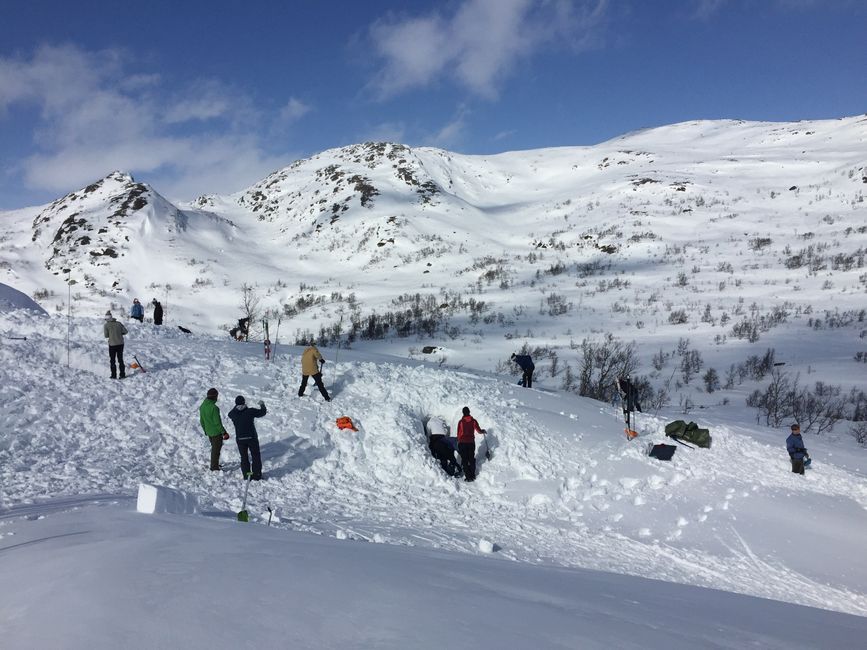
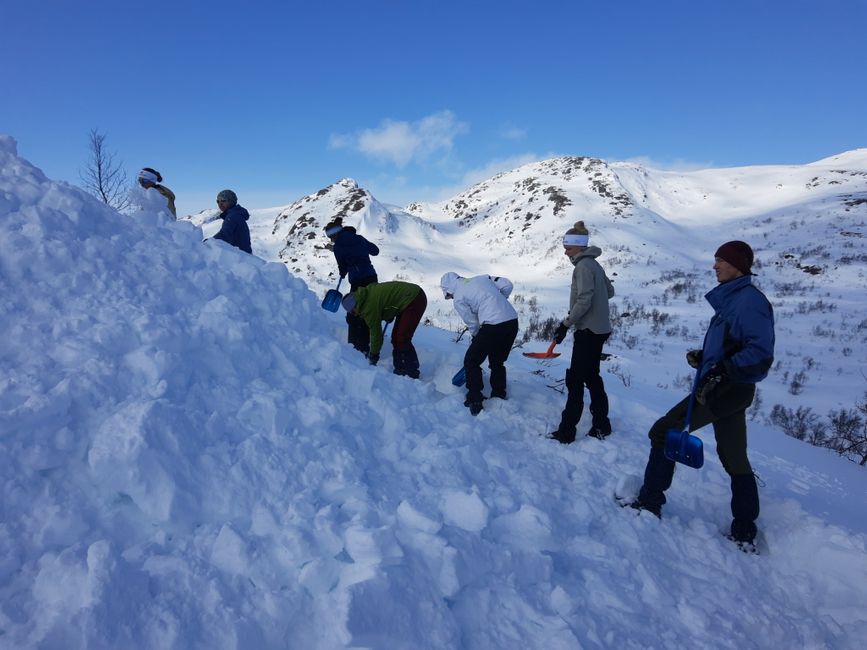
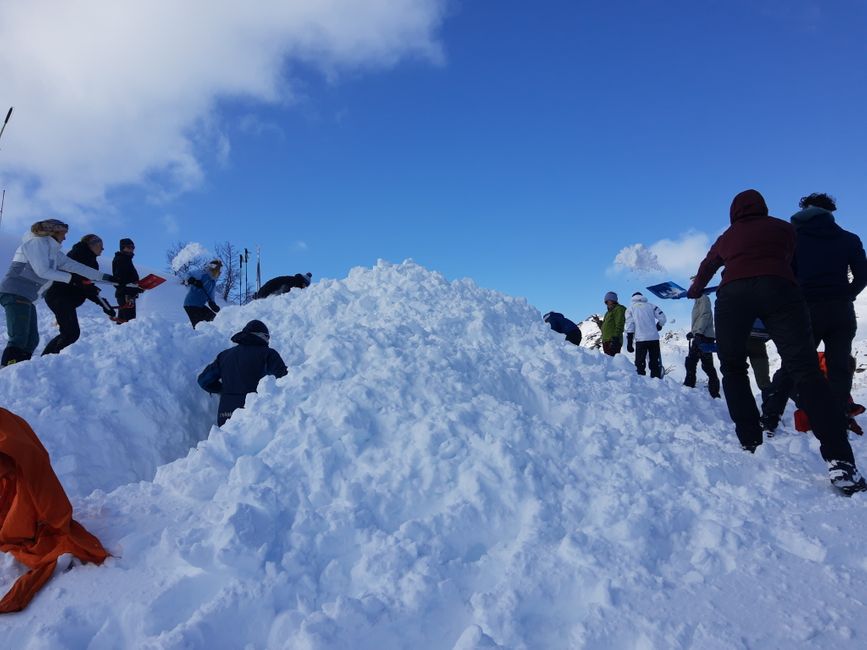
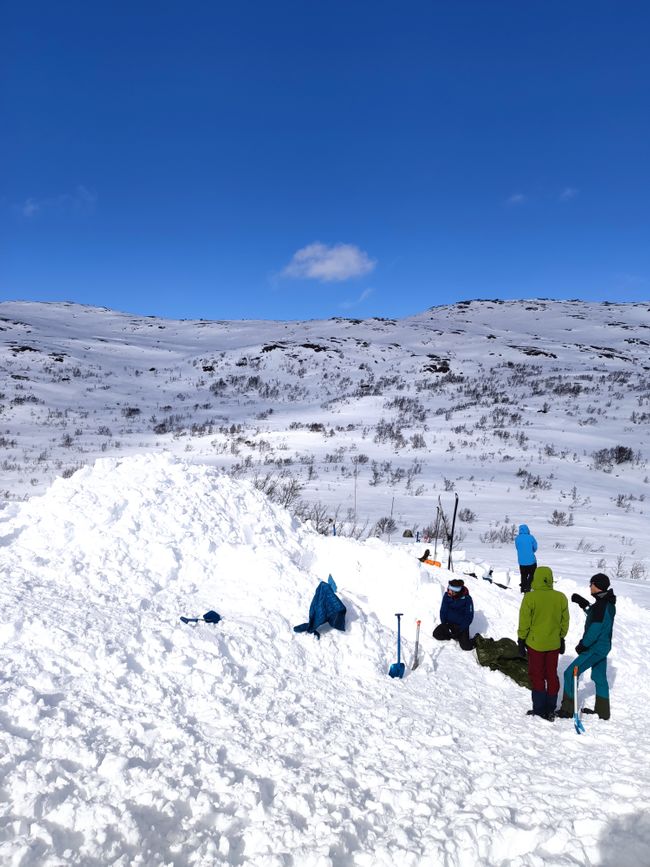
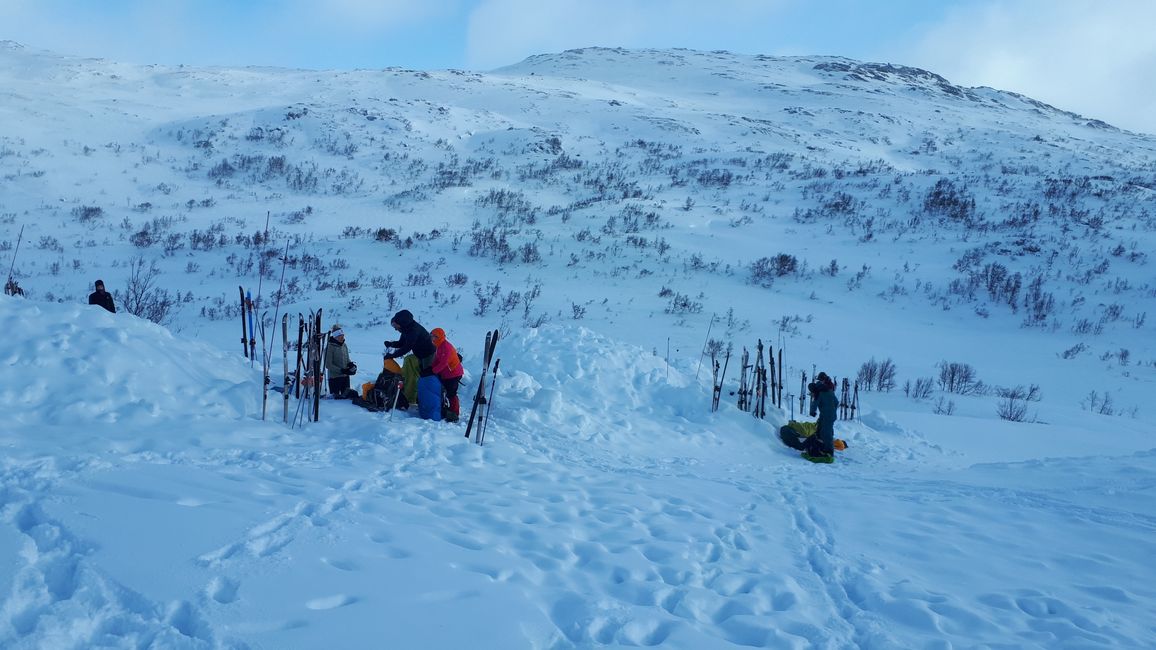
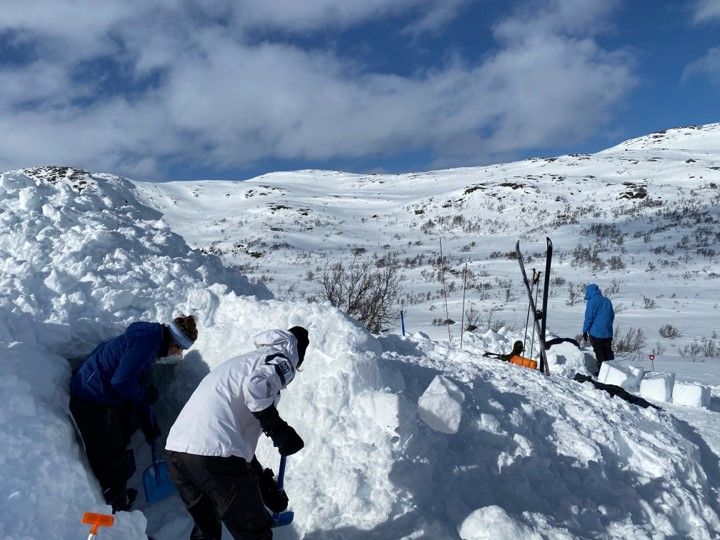
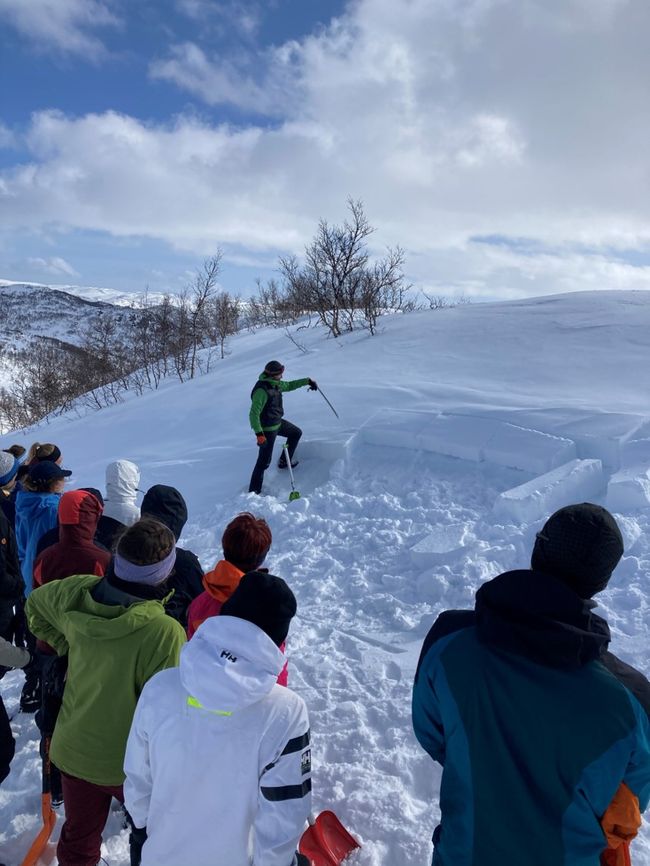
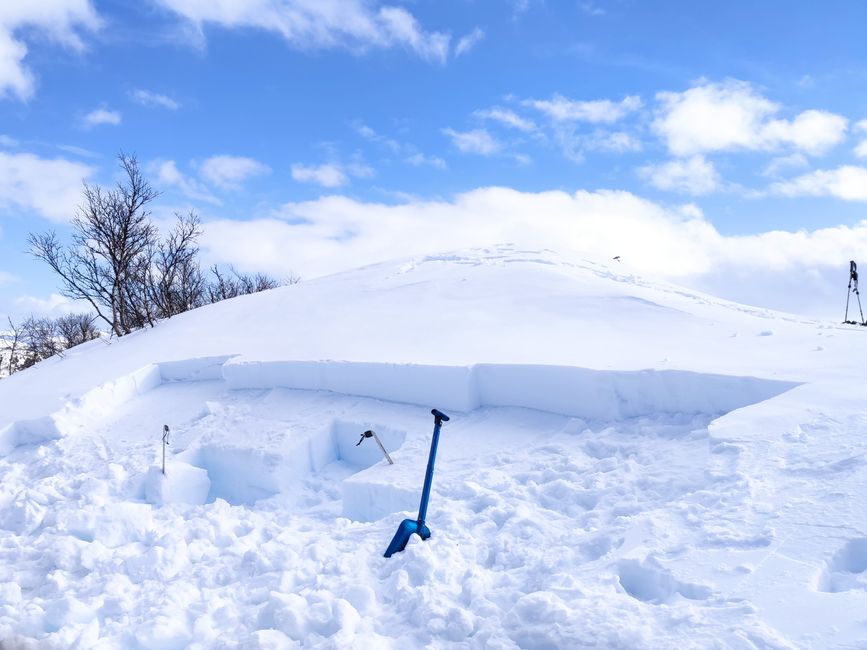
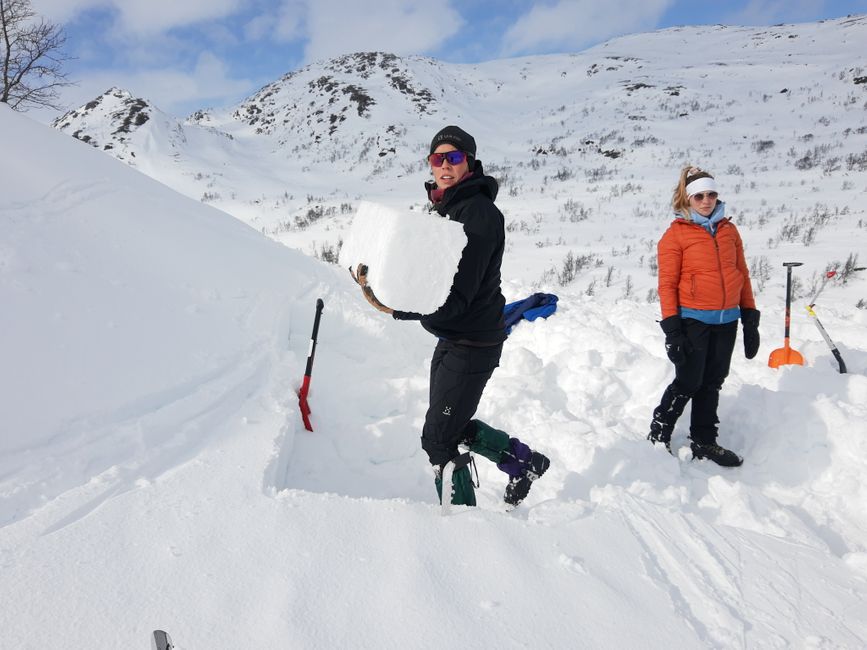
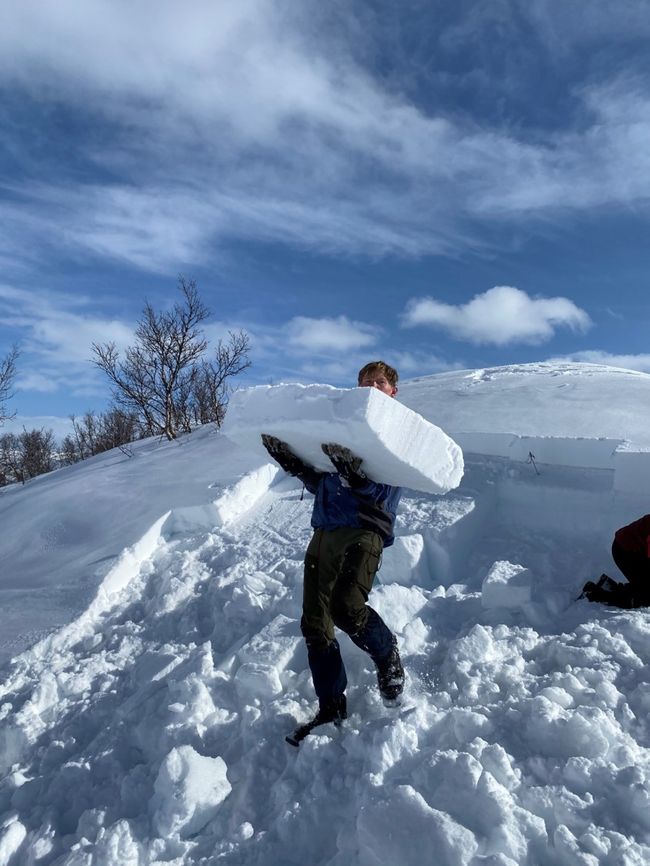
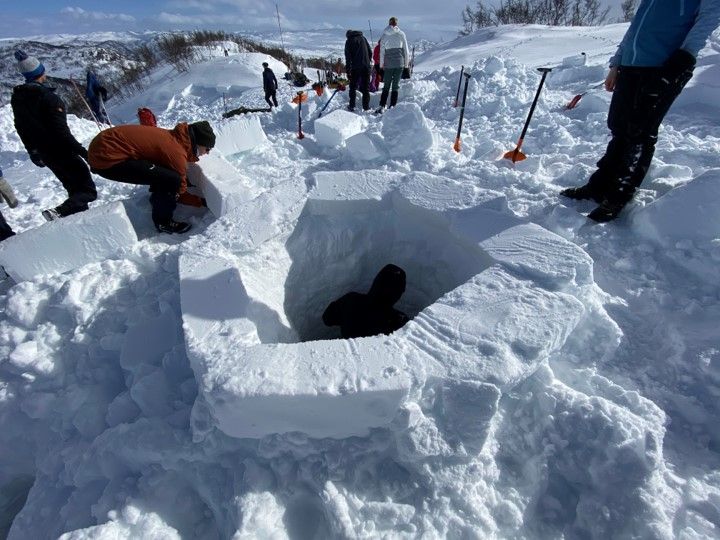
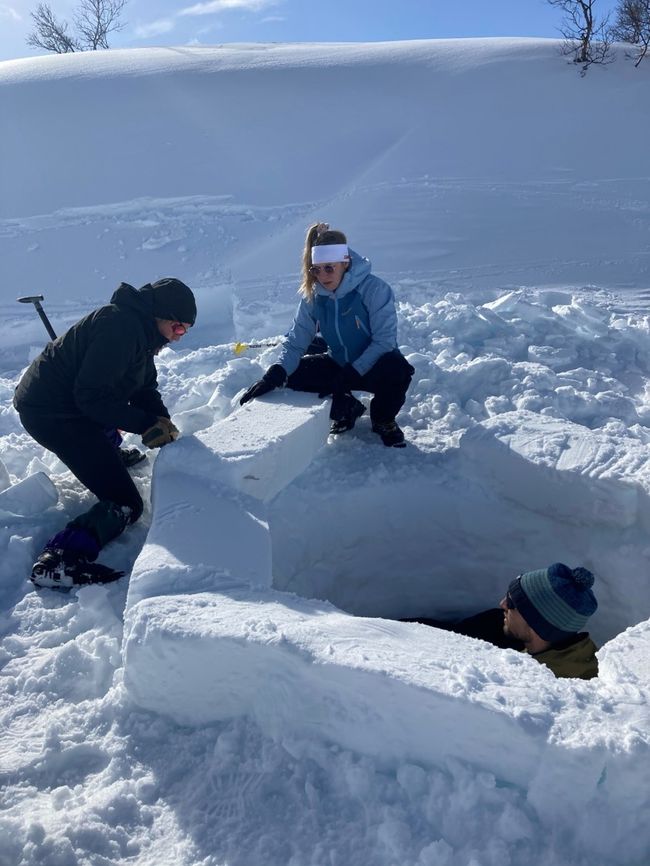
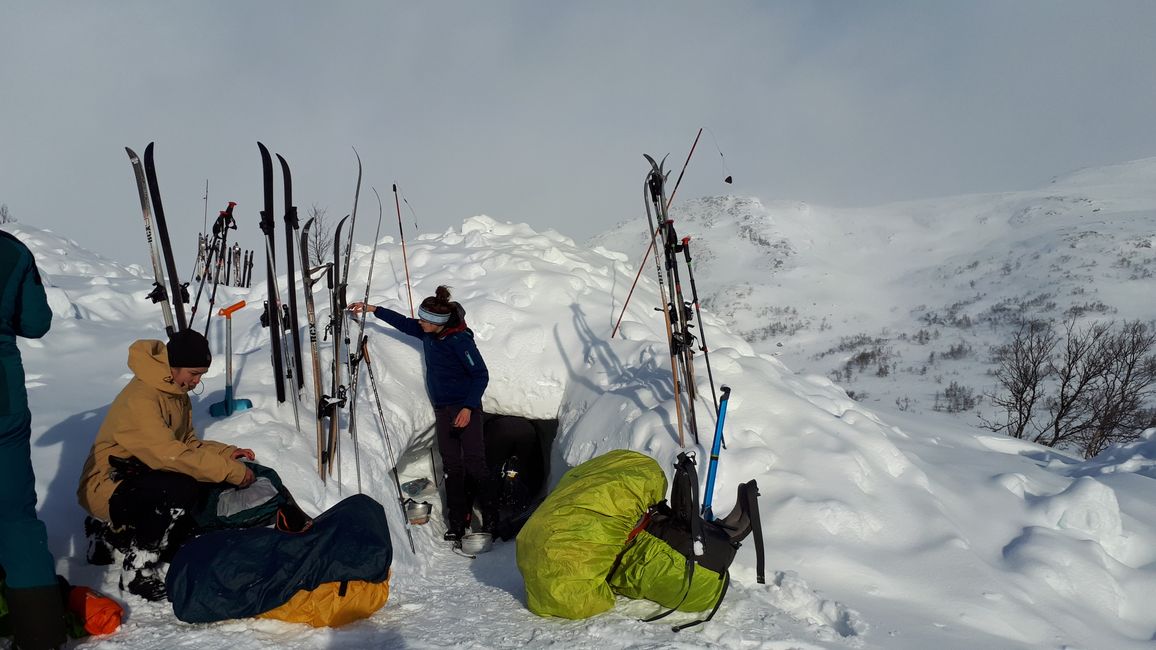
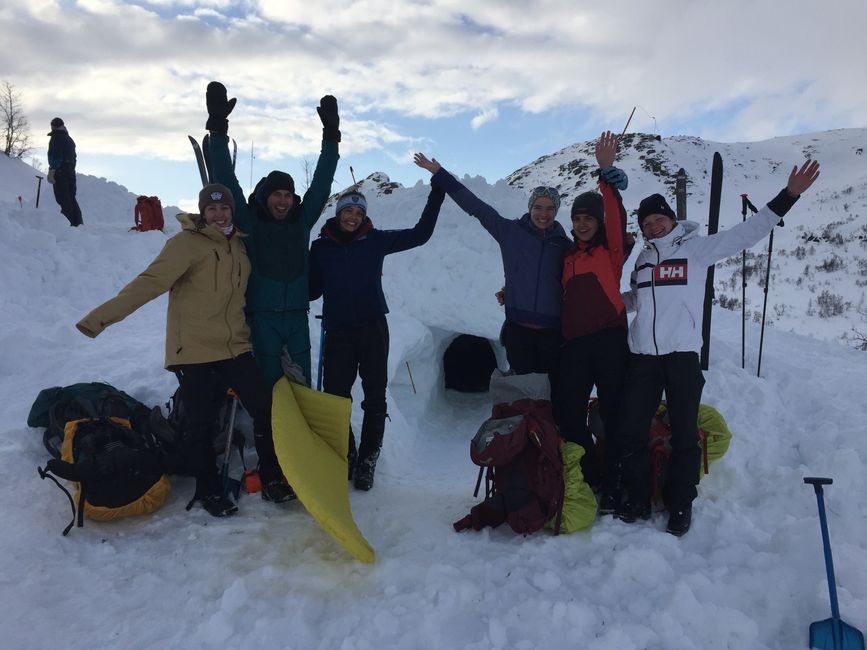
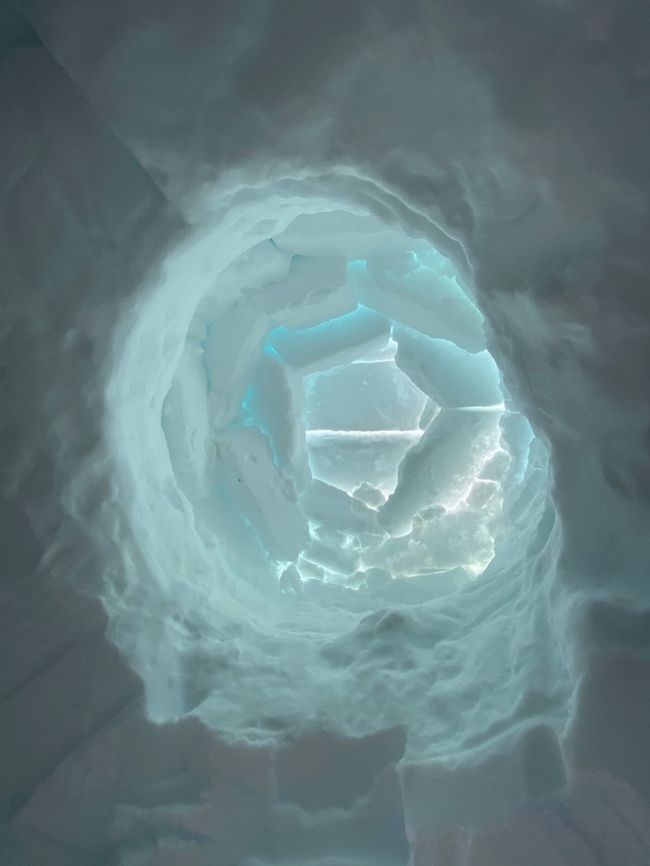
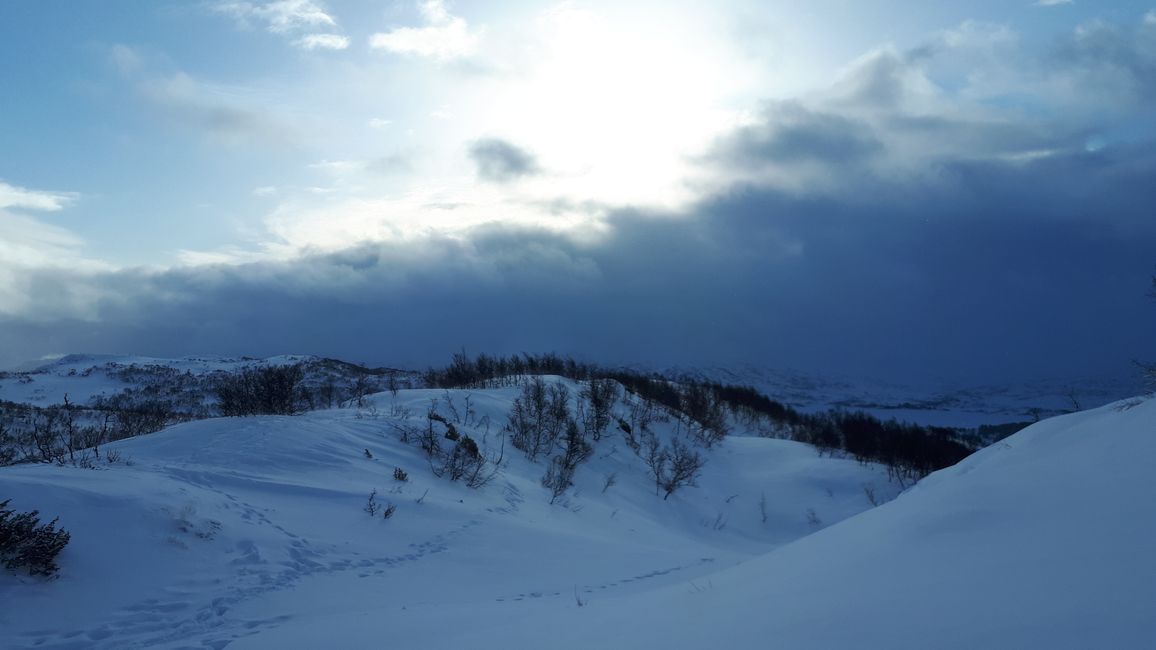
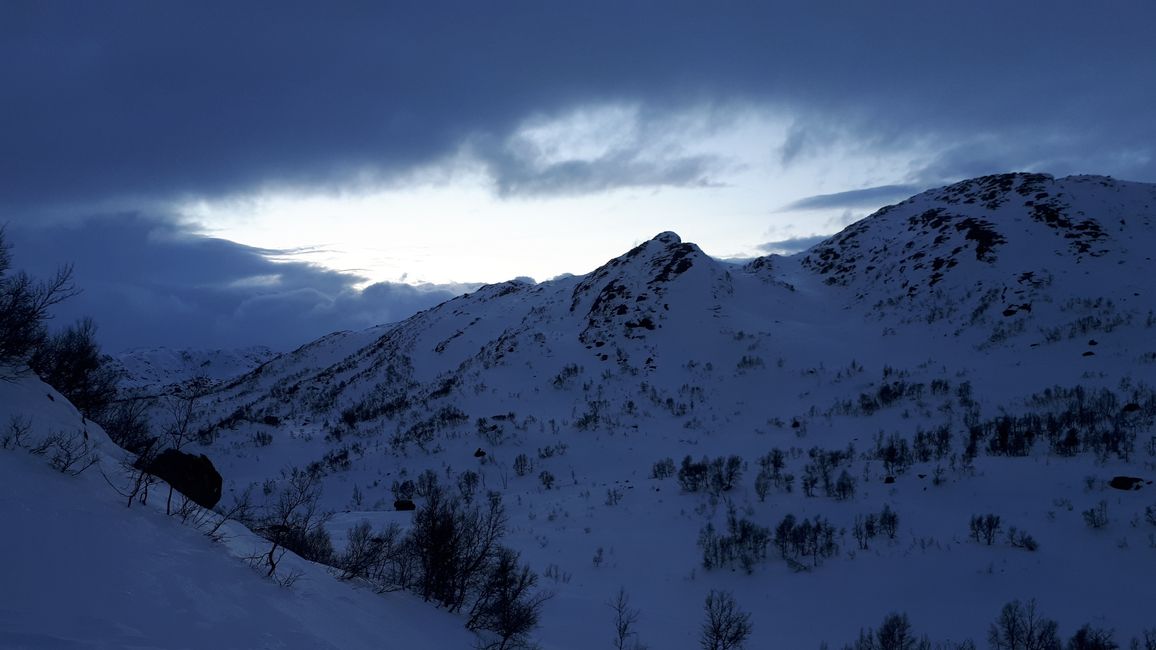
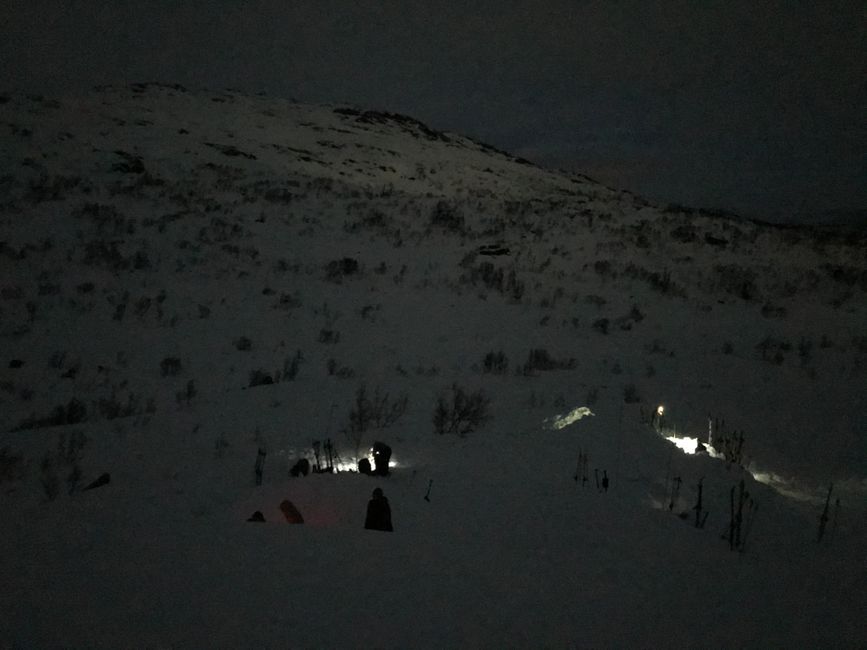
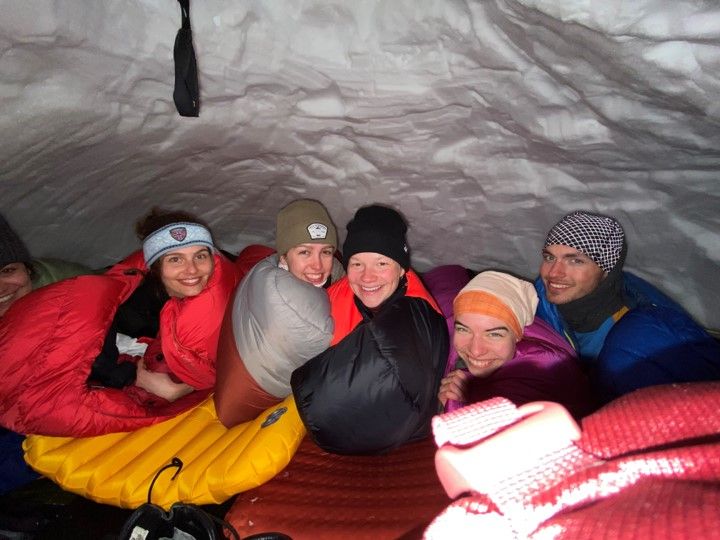
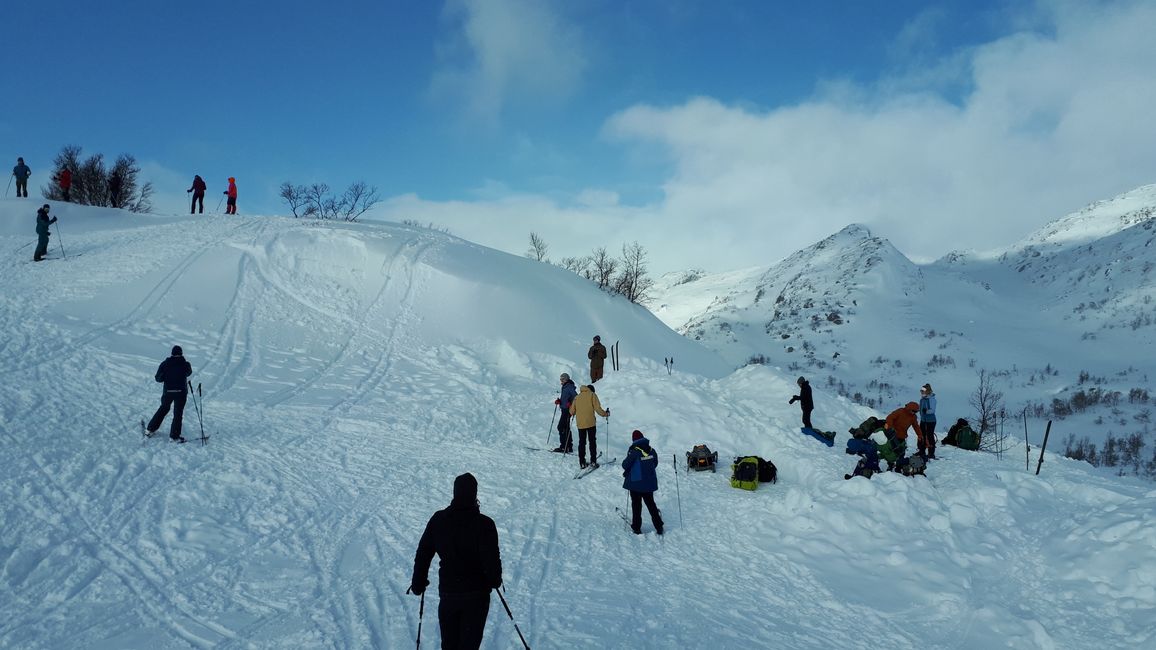
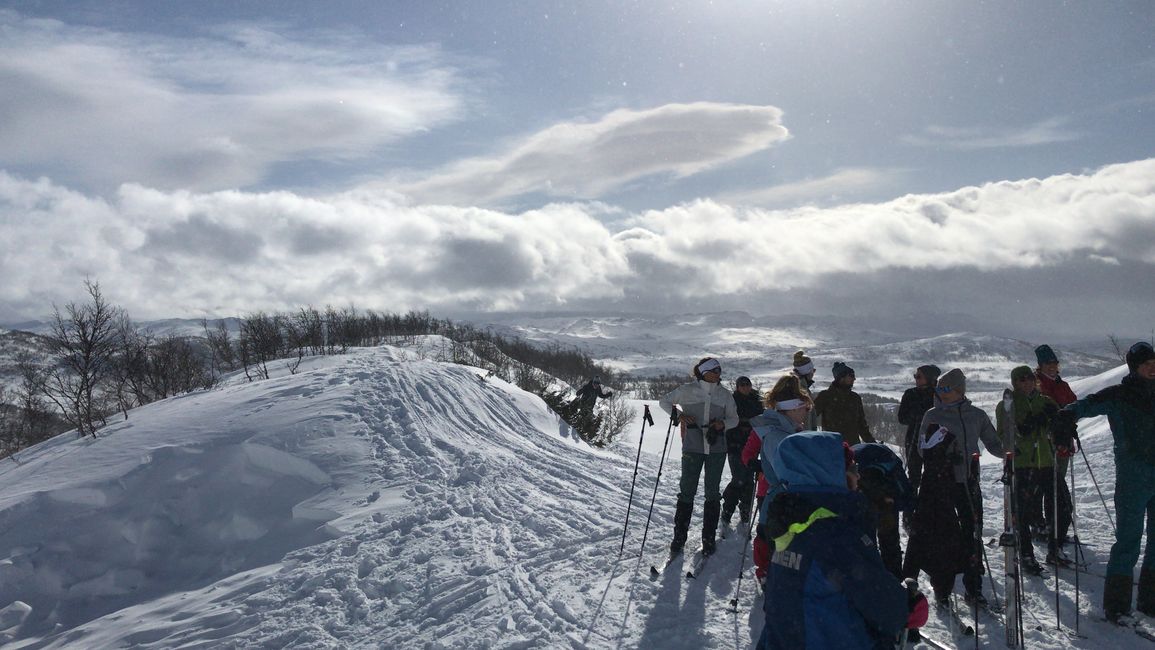
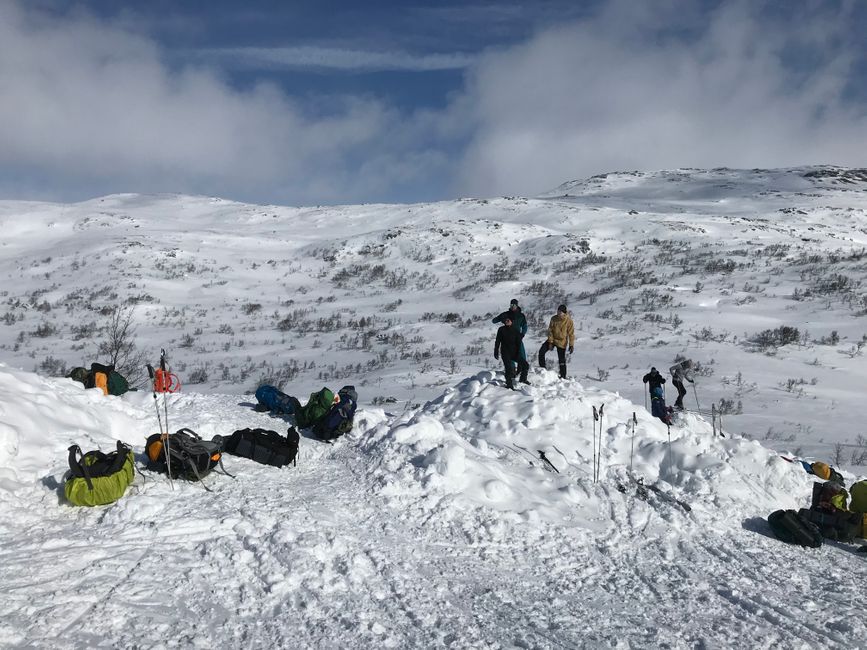
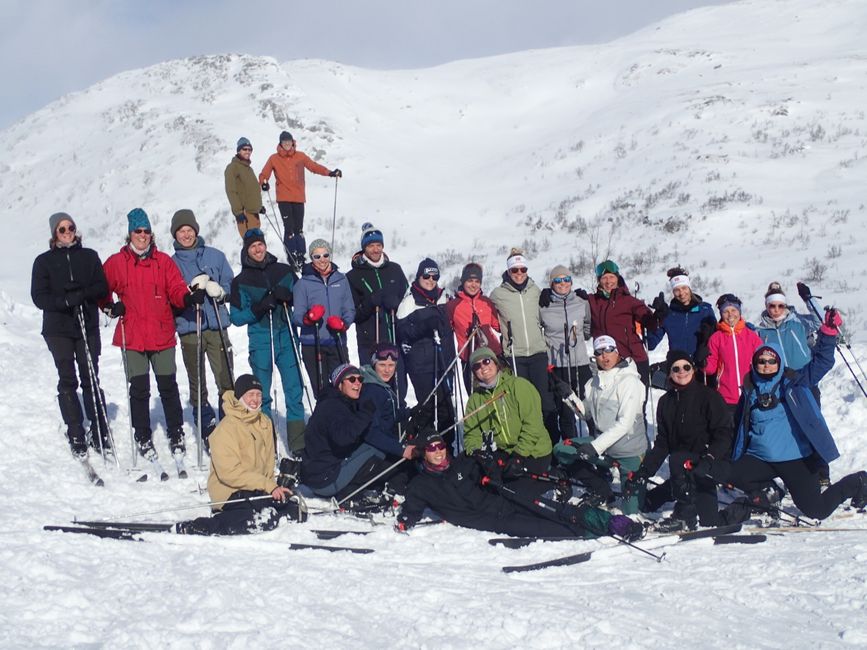
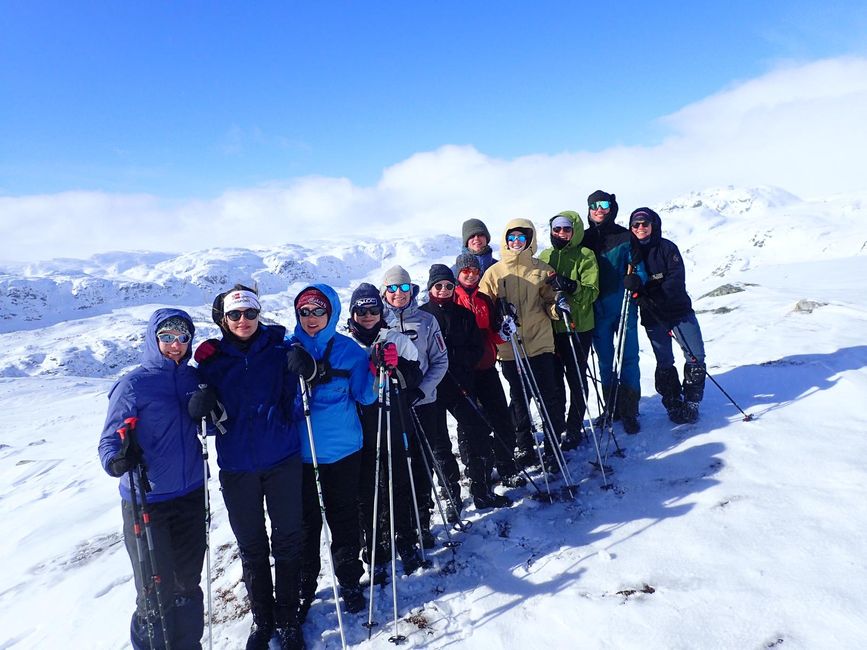
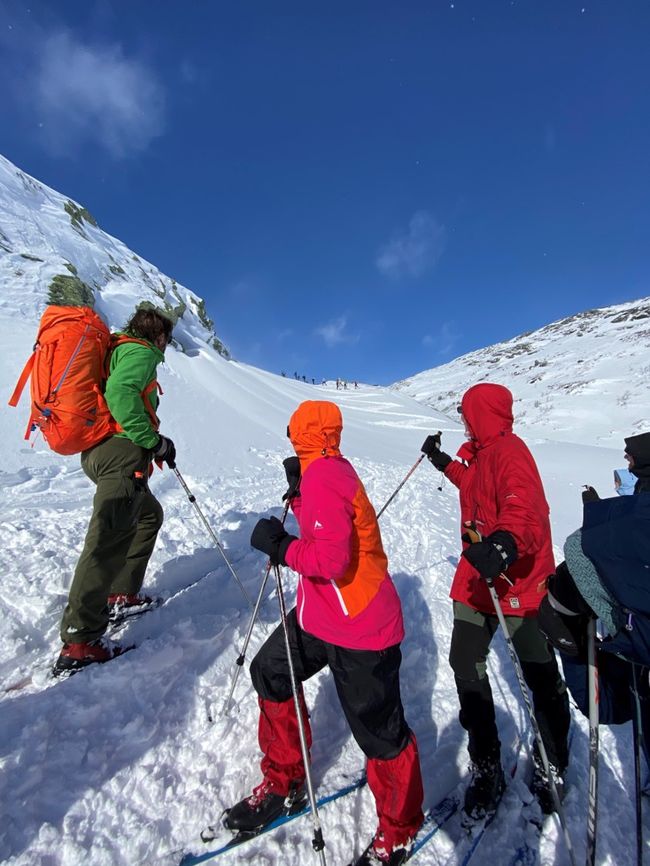
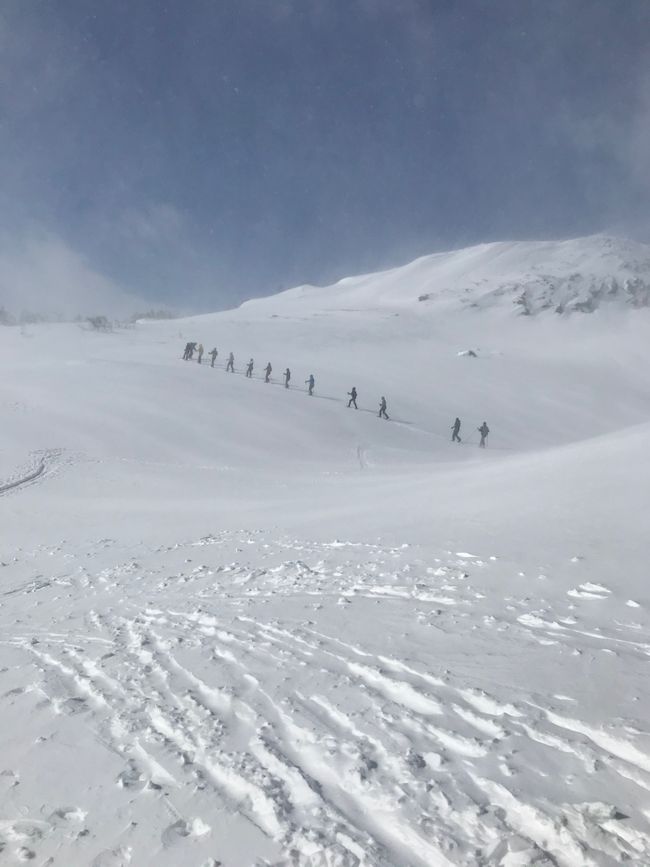
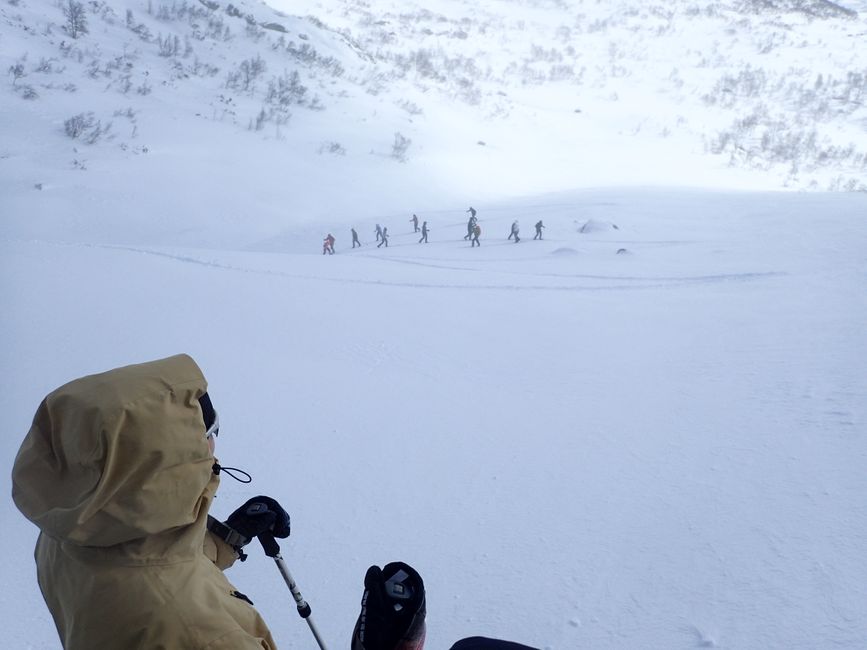
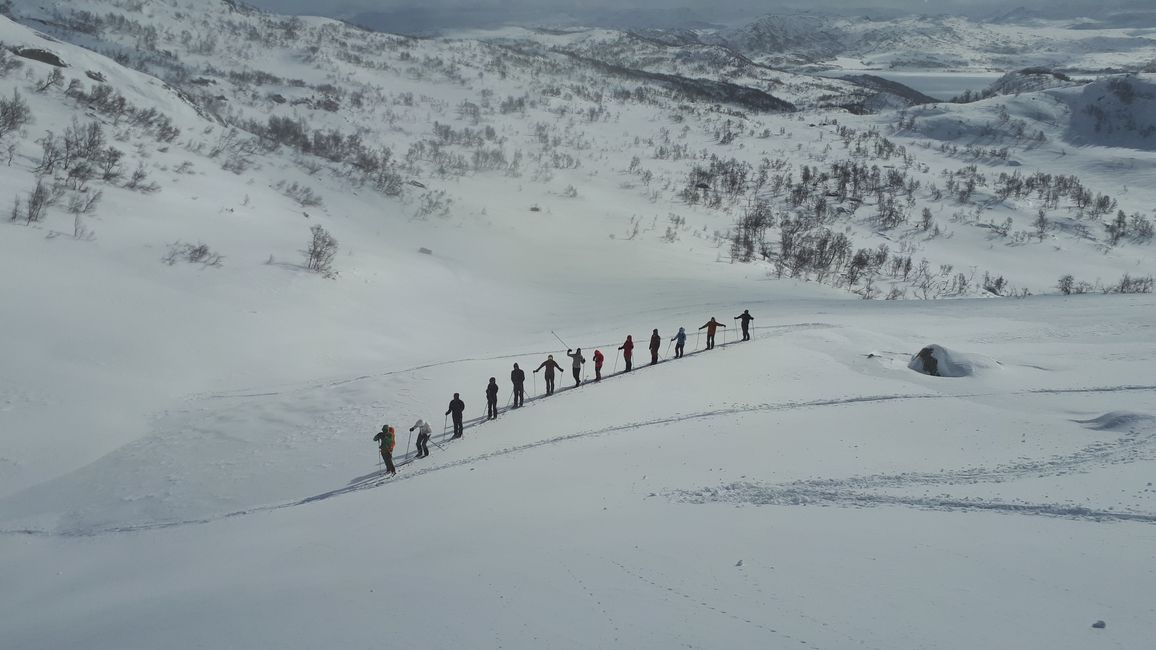
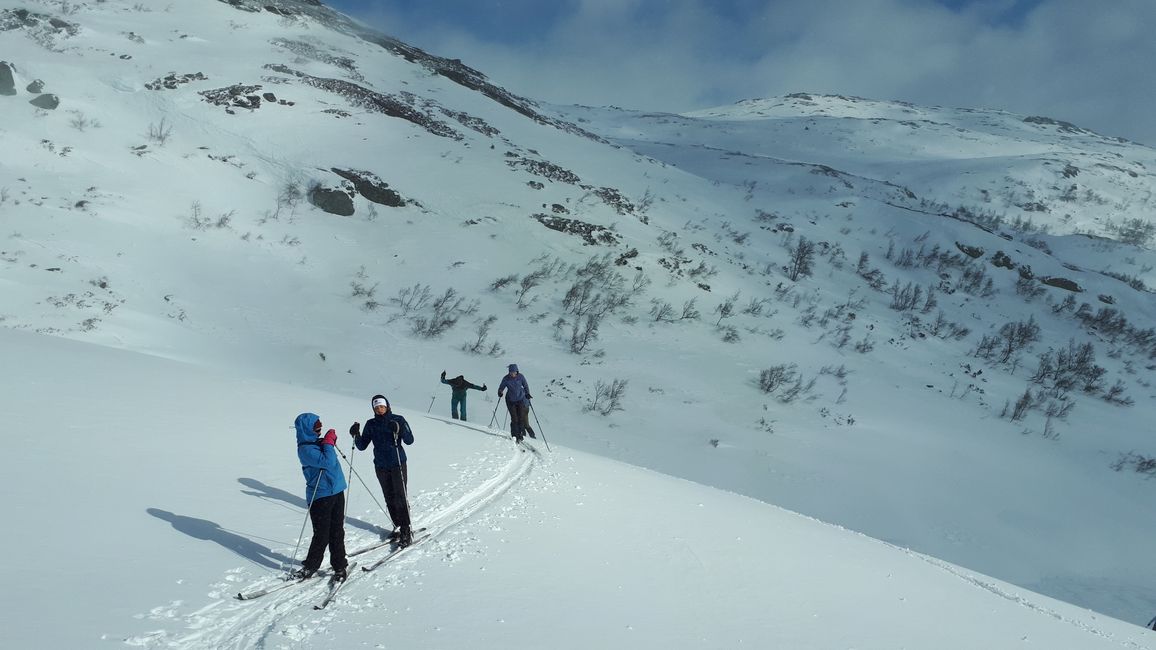
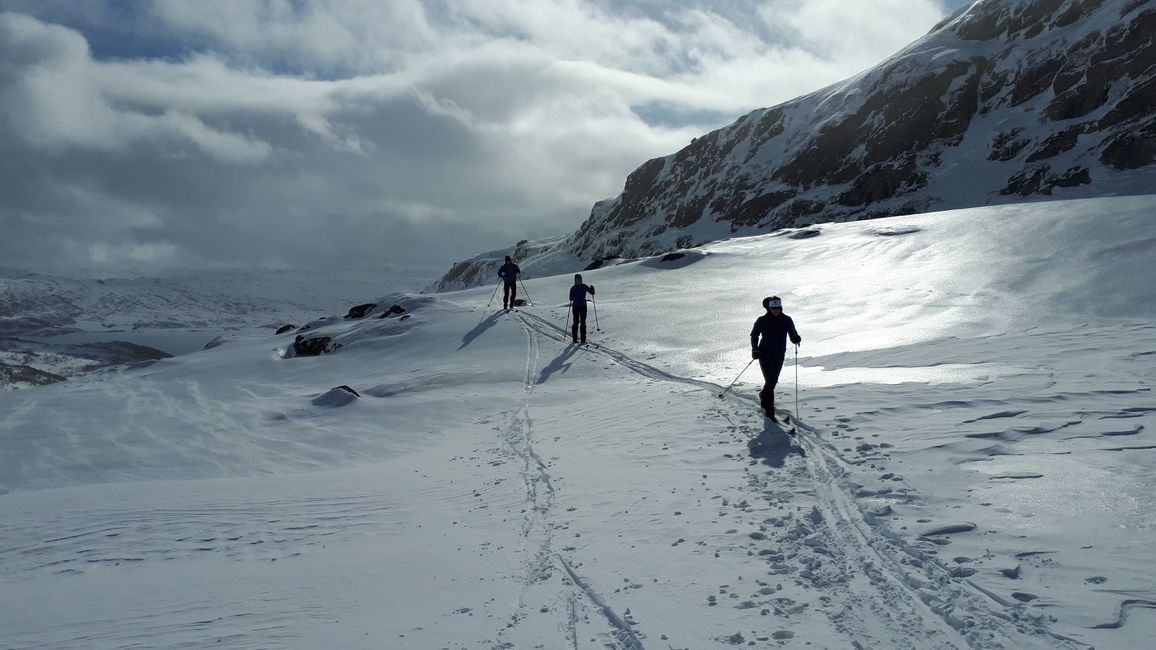
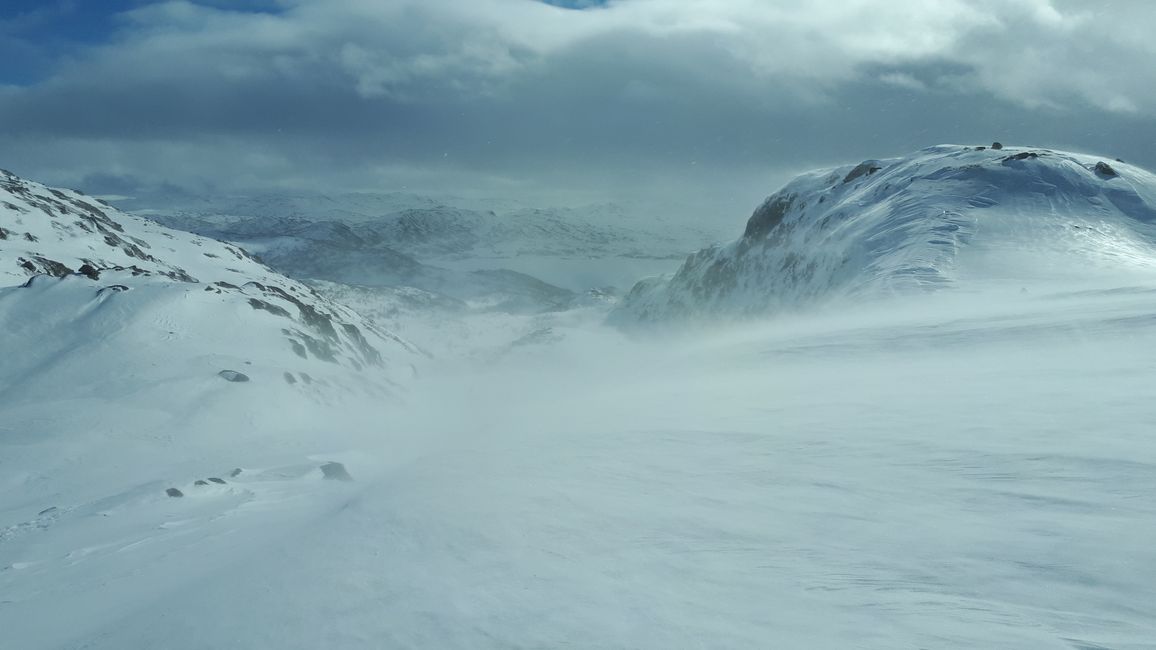
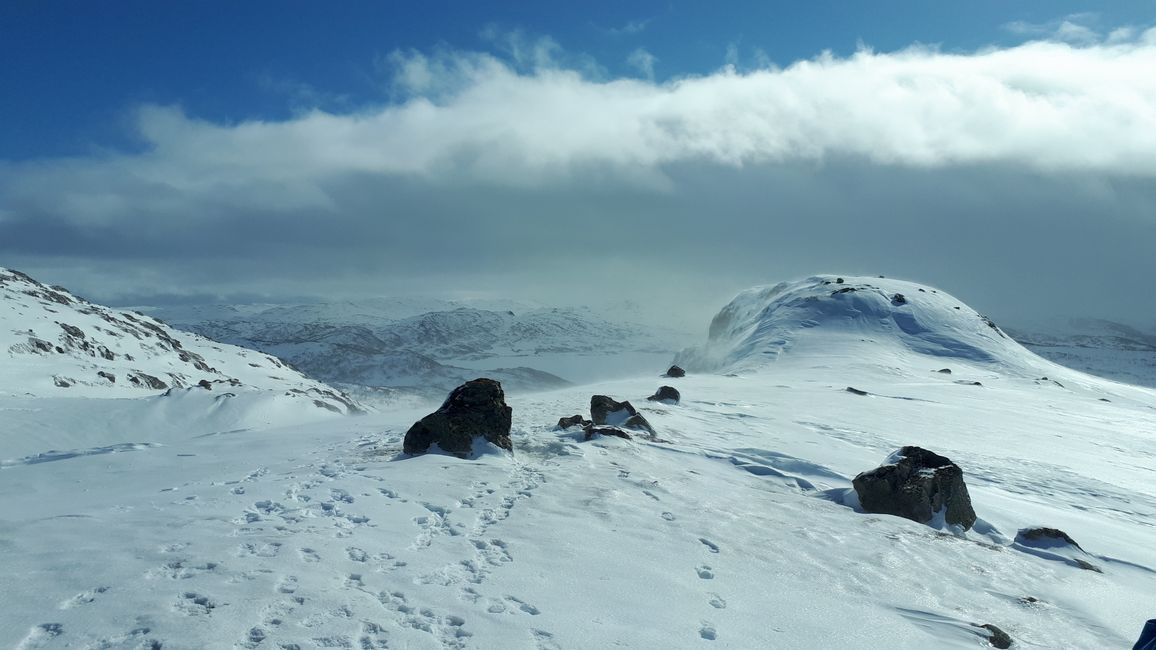
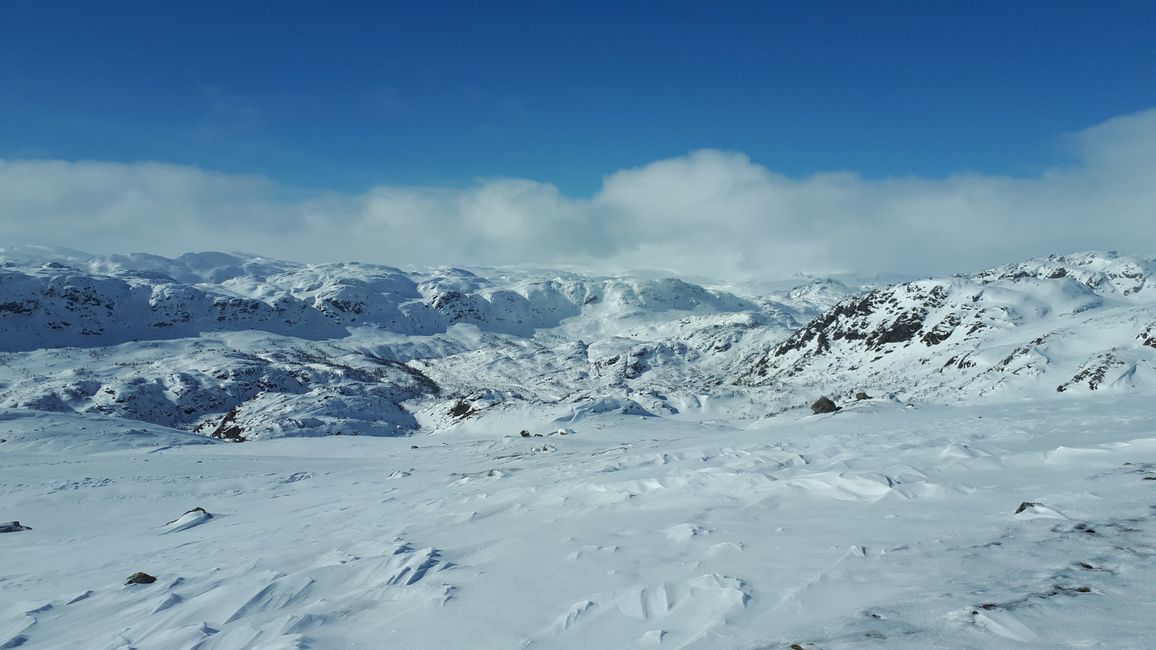
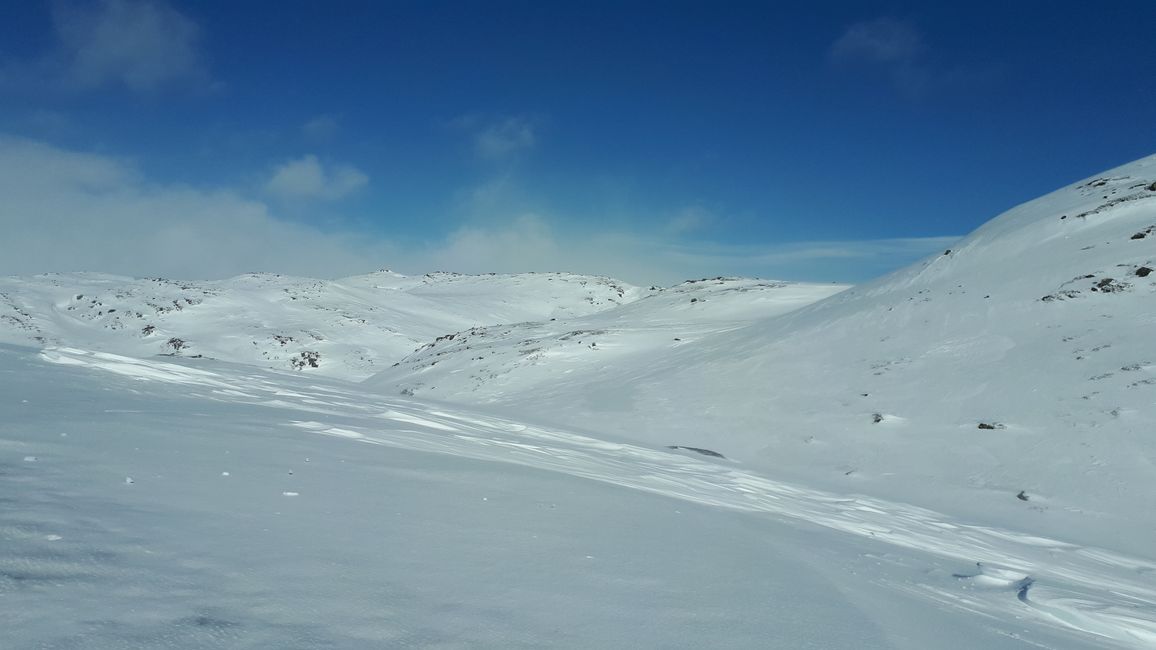
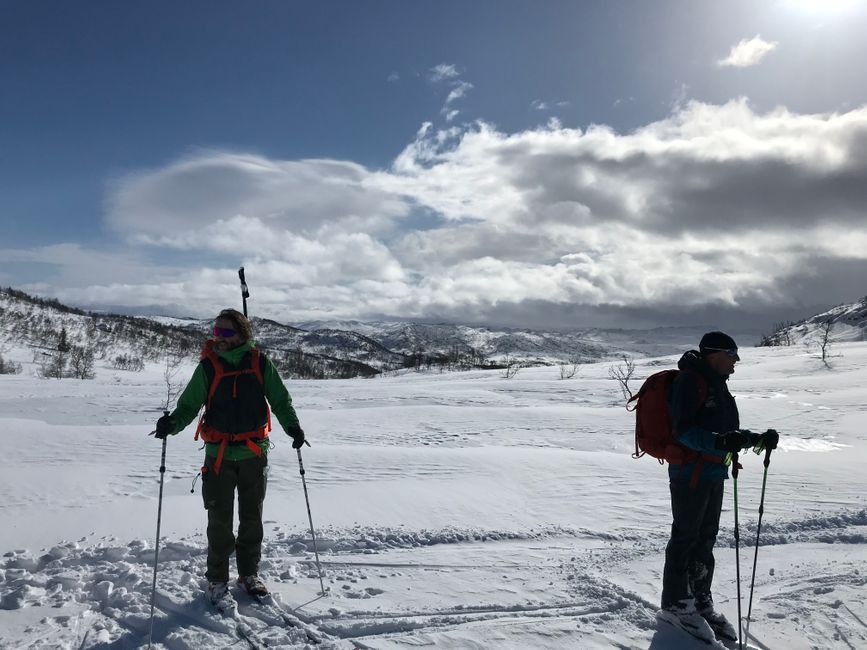
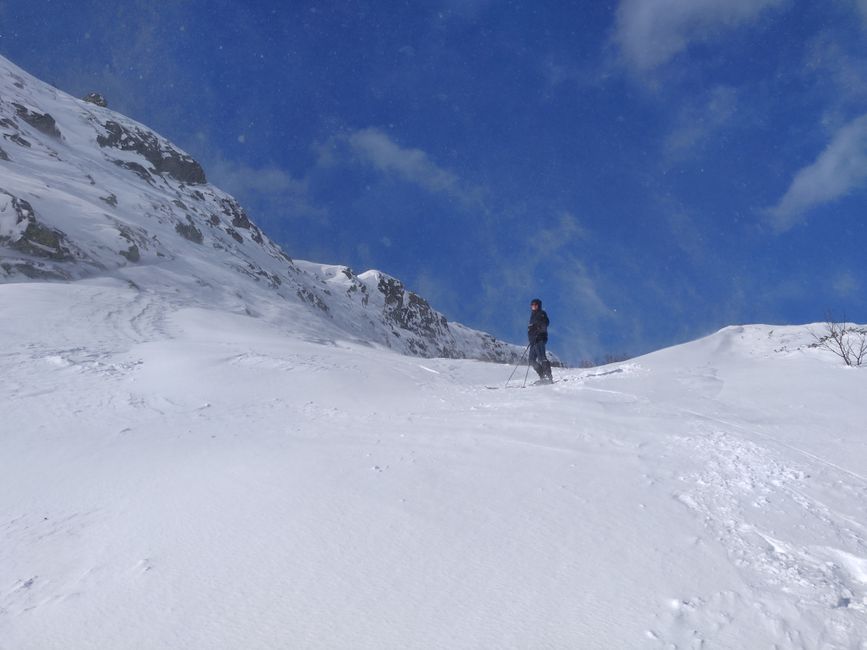
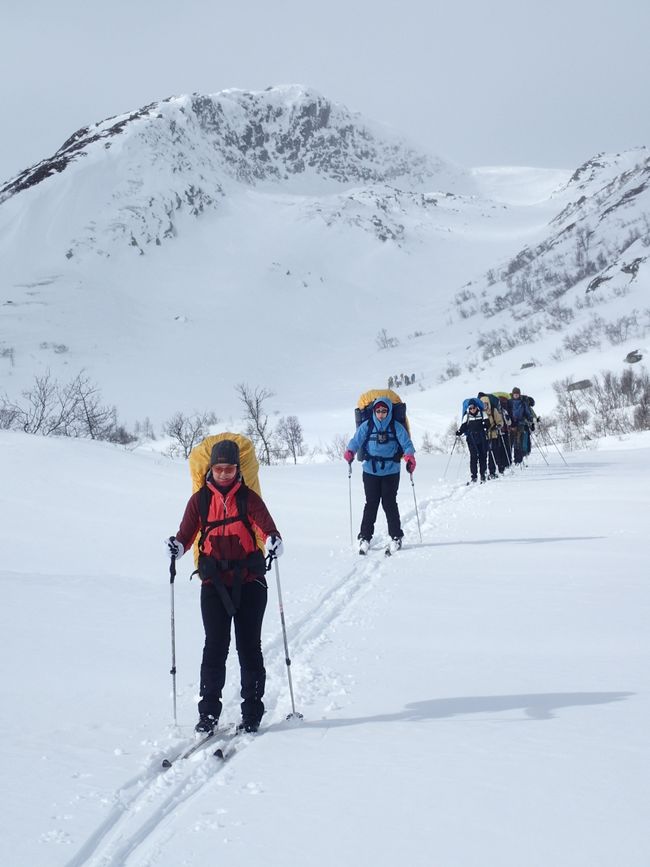
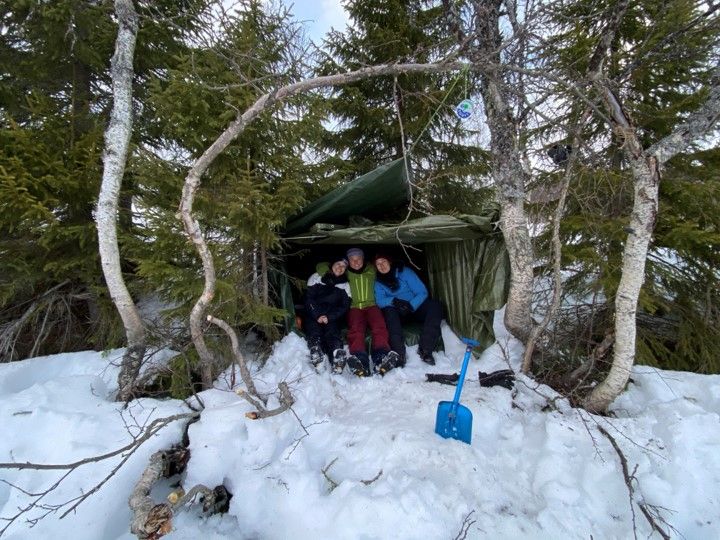
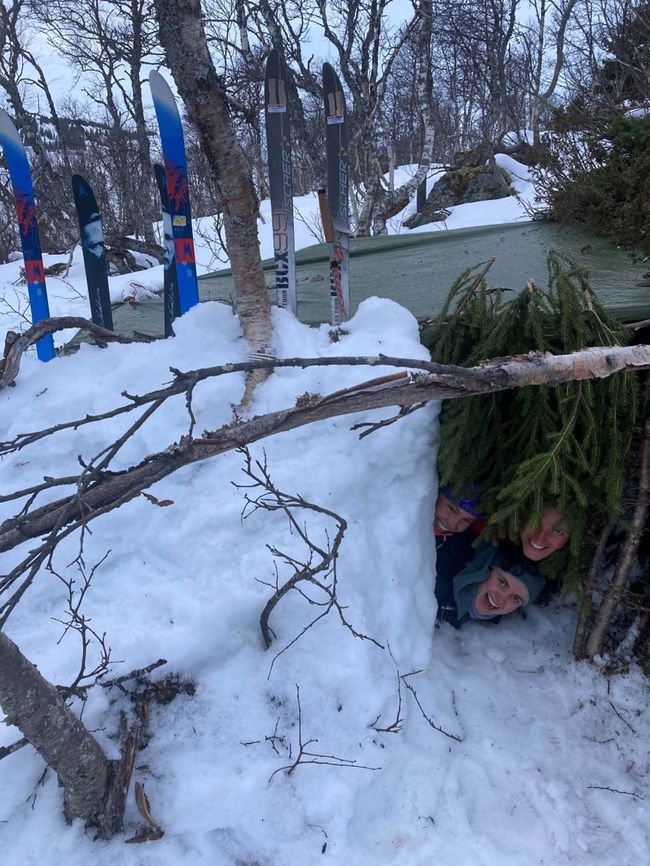
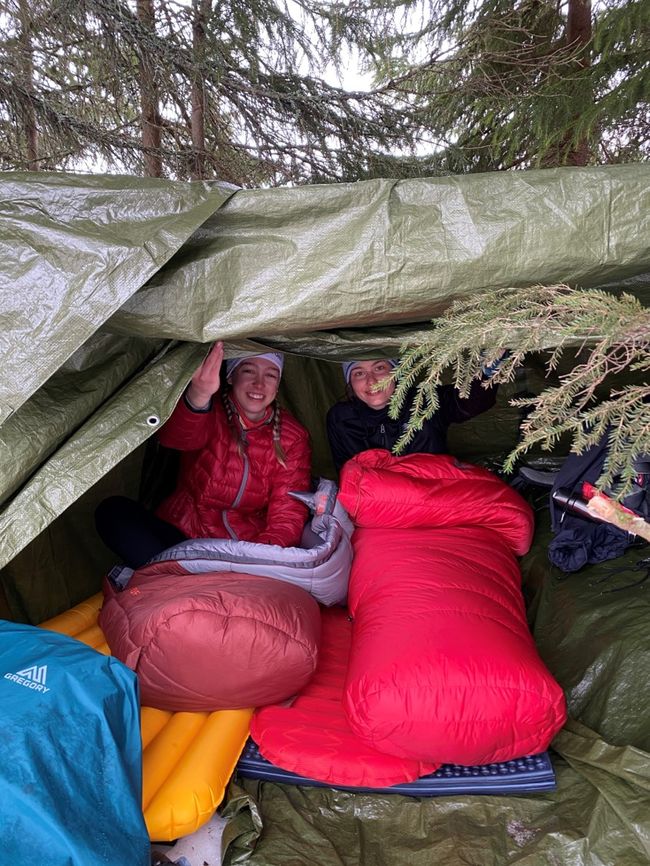
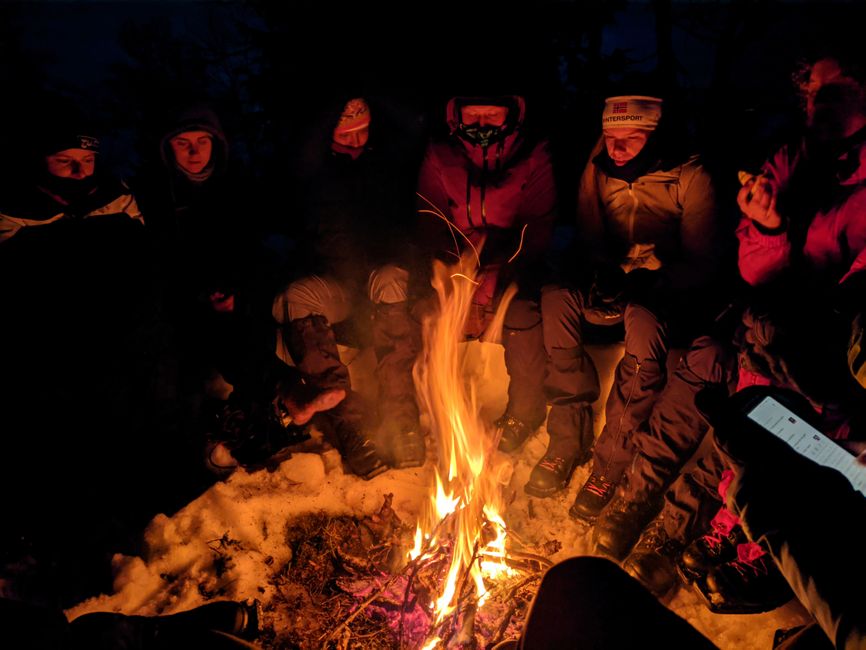
订阅时事通讯
Suddenly large amounts of snow and ptarmigans
From March 22nd to March 26th, our great Mountain Cross Country Ski Trip at Hovden will take place.
We will meet on Monday morning, March 22nd, with all our luggage in front of the main university building and then travel together by coach for about four hours to the town of Bjåen, north of Hovden. We are located directly below the Hardangervidda National Park, which is a mountain plateau and even the largest highland in Europe. For the first two nights, we will stay in a large cabin. We quickly settle into our accommodation and then meet outside to get back into Cross Country Skiing and explore the area. As it has been quite warm in the past weeks and days, the snow is wet and heavy, and the lakes are slowly starting to thaw. However, the lakes are still frozen thick enough for us to cross them easily. As we ride along the shore of a lake, a white ptarmigan suddenly flies up in front of us. We see a few more of them and Len explains some things about their nests. We ride on for a while and then have to navigate back ourselves, which is not always easy in the mostly white landscape. Back at the accommodation, we also use the nearby mountain to build small ski jumps and a mogul piste, where we can have some fun. Only when the sun has set, we go inside and have dinner. After that, we all meet in a common room and play some games. Most of us, however, are busy knitting hats.
Climbing peaks and reindeer herds!
On the second day, Tuesday, we initially walk along a road for about two km to then cross the main road and continue upwards into the national park. Carrying skis, backpacks & co. was actually quite exhausting. We still wax our skis and then we're off. First an ascent. Fighting our way up the mountain in zigzags.
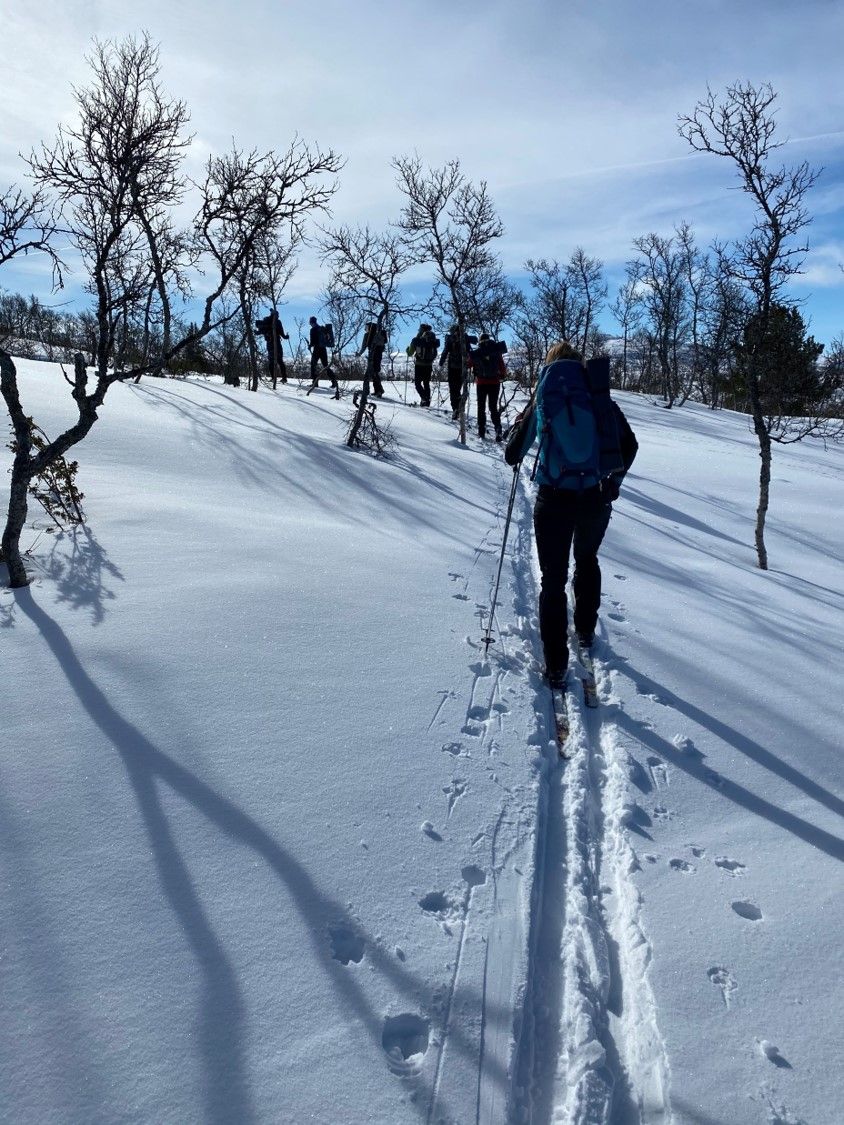
It's blue sky and the sun is blazing. It's so warm that I even take off my jackets and am occasionally only wearing a long-sleeved shirt. In beautiful weather, we find our way through some valleys and over some mountains to a wooden cabin where we take a lunch break.


We relax in the sun and are eating when Tim, our second coach, suddenly thinks he sees reindeer in the distance. We immediately become quiet and don't move a centimeter. And indeed, in the distance, you can see animals running down the mountain. They keep running further down in our direction. Occasionally, they disappear behind hills, but they always reappear and get closer and closer. We are so quiet and calm that we are incredibly lucky and they don't notice us at all. The animals have now reached the foot of the mountain and are slowing down. They are now only a maximum of 100 m away from us and are walking calmly in front of us. I can now observe them from a closer distance. It's a herd consisting of six animals. Incredible!

My wish to see reindeer in Norway has come true - and how! After they disappeared in the other direction behind hills again, we get ready to continue on our way. But suddenly another herd of reindeer appears in front of the hills. This time, however, we are noticed and the animals watch us skeptically, then turn and continue in one direction.
After this great experience, we continue our way and go further up the mountain from which the first herd of reindeer ran down.
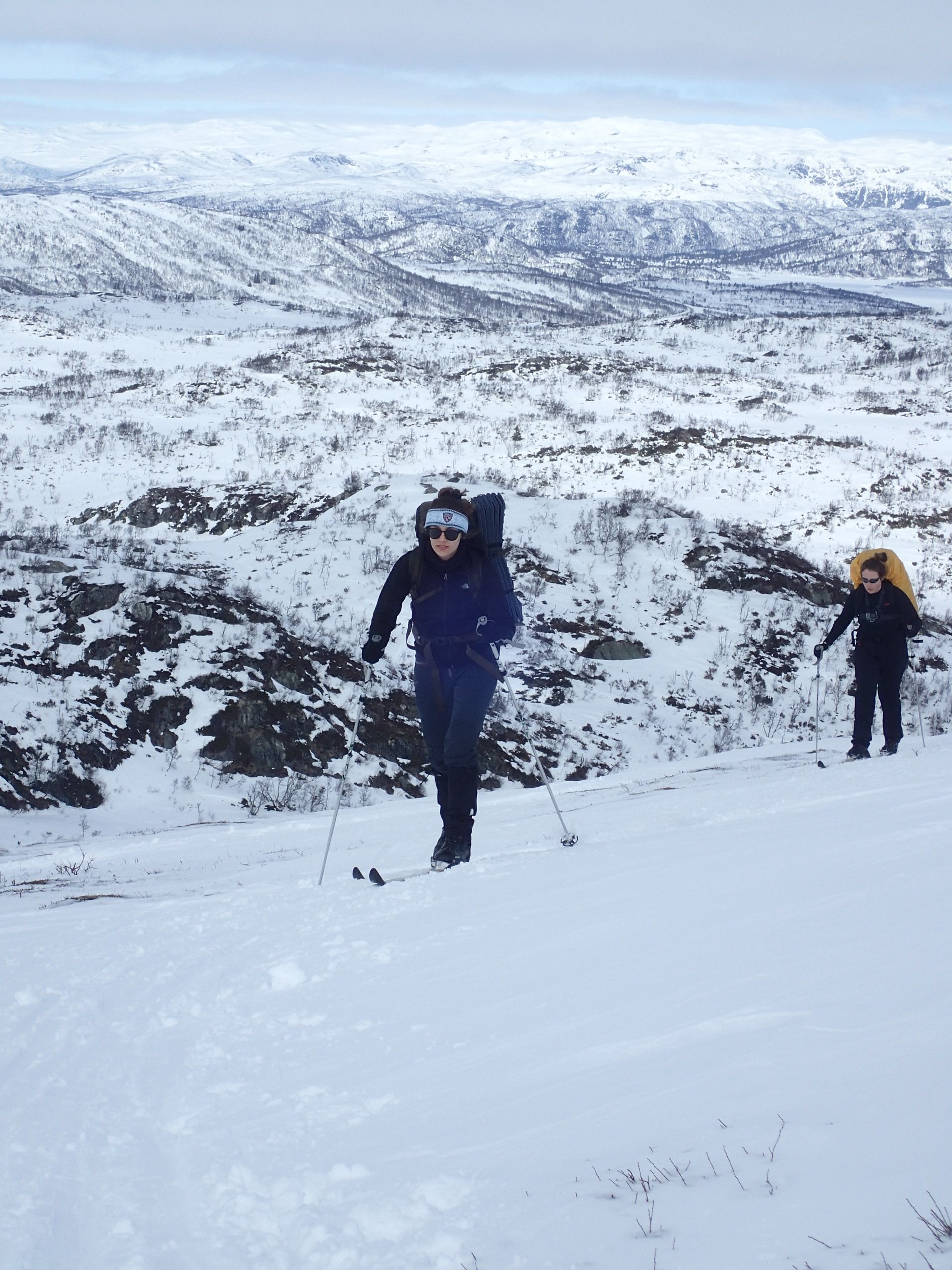

We climb the summit called Bukkenuten (1184 meters above sea level). From there, we have a great view of parts of the Hardangervidda National Park.

But as the wind is blowing strongly up there, we only stay for a few minutes and then continue. During the descent, we have to go down a slope that is a potential avalanche area. Therefore, we don't descend directly one after the other, but always one by one, to trigger the snow as little as possible and so that, if an avalanche occurs, no one else gets caught or has to be searched for.

However, everything goes well. As we go down again and it gets a little flatter but still downhill, we stop and Tim tells us about the current weather events in Norway. The mountains are our classroom and the snow is our blackboard.
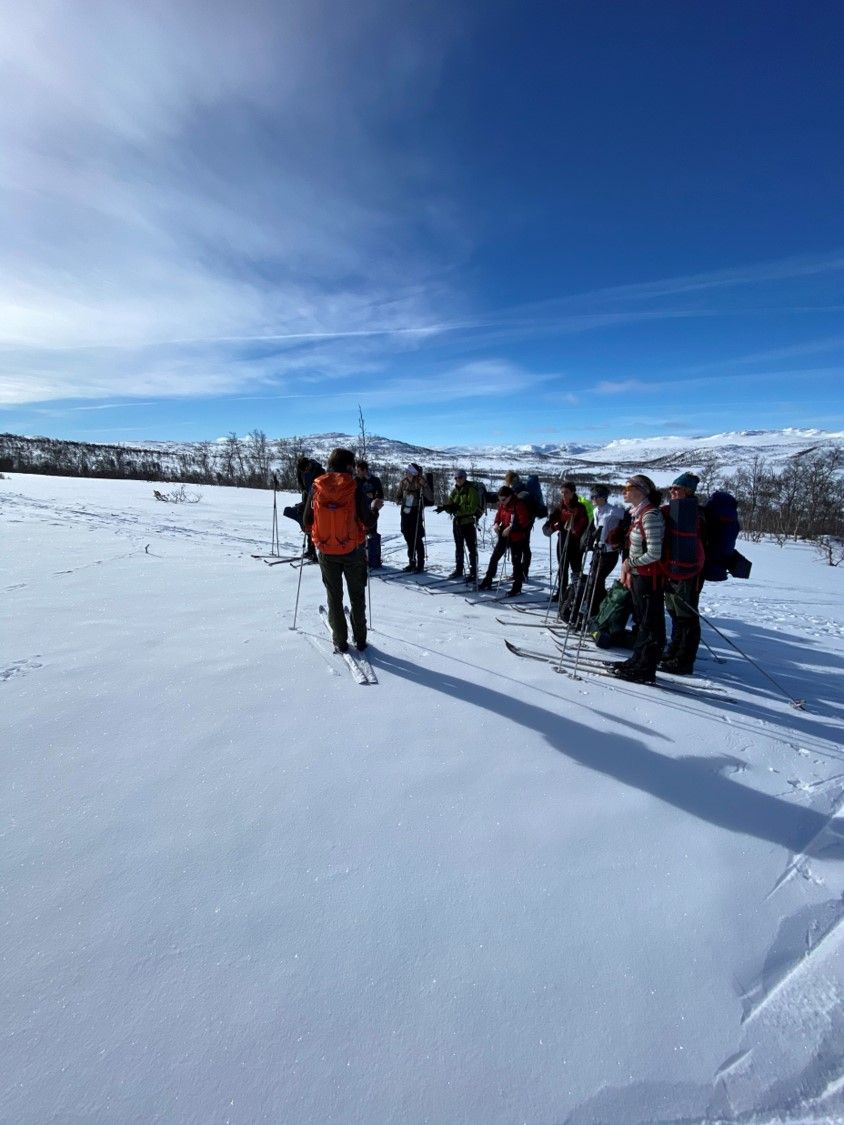
The last part of the tour is a two km wide lake that we are supposed to cross for at least 200 steps with our eyes closed.
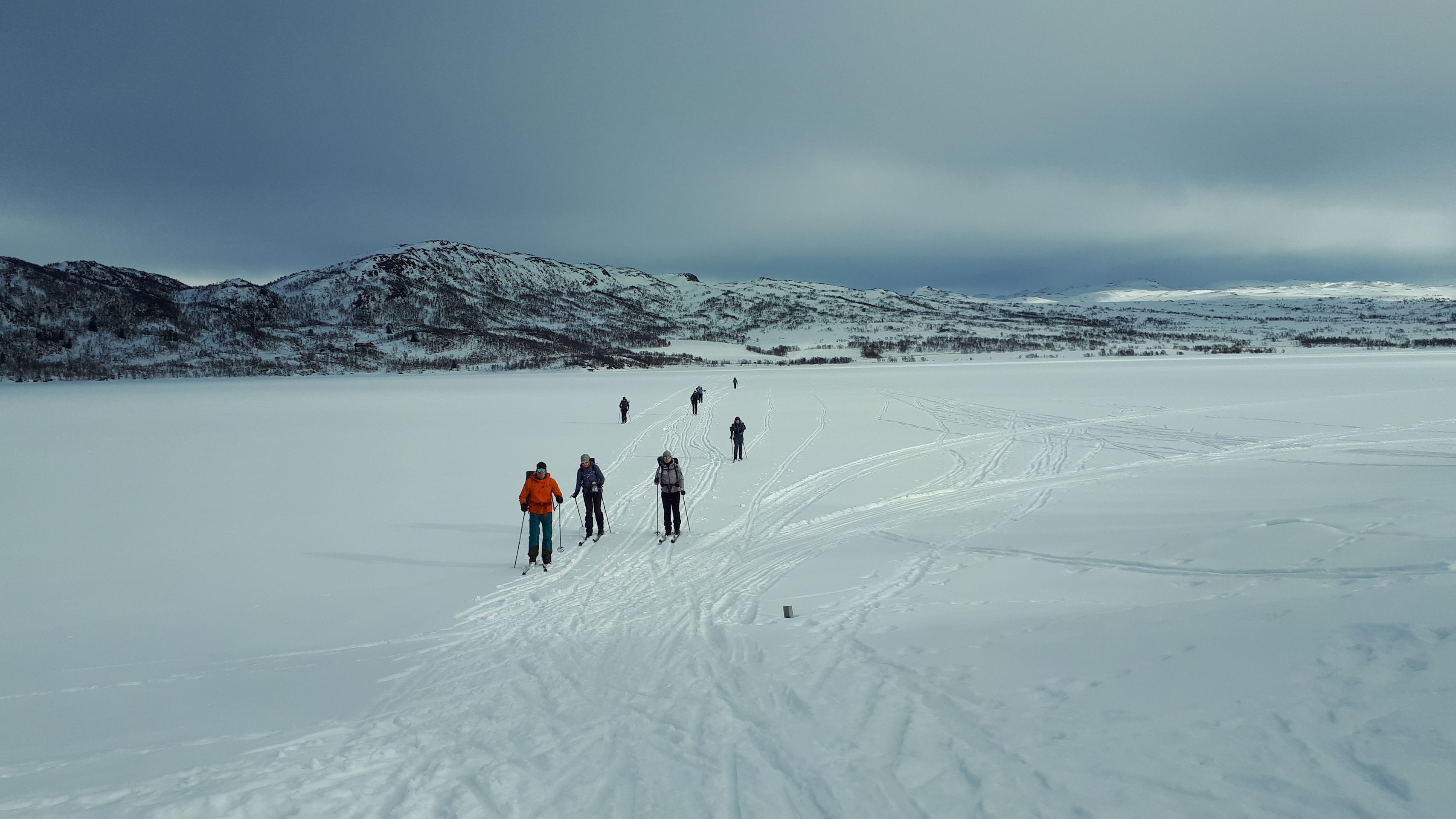
With this, Tim wants to show us how quickly you can lose your orientation and deviate from the actual path in bad visibility. By the way, I have often played this game with tourists or school classes during my mudflat tours. In the evening, I pack my things from my small backpack into the big one because we will be staying outside for the next two nights.
Building igloos
On Wednesday morning, we drive a bit up into the mountains with all our equipment.
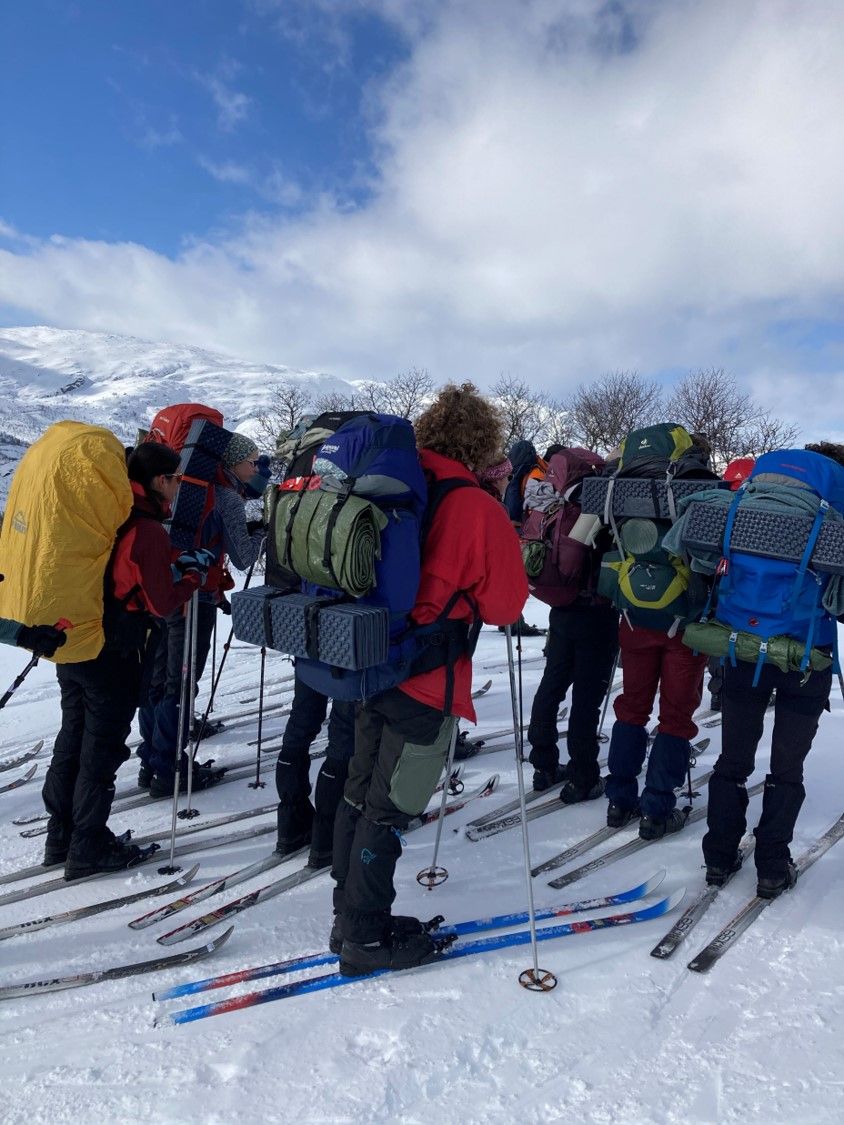
However, we don't drive far on this day, after just one hour we stop on a slope and measure the depth of the snow. There is about three meters of snow here! Sufficient snow to build our igloo. We split up into groups of six.

Within a radius of one meter, I start shoveling away the snow around me and digging deep. I take turns with two others. At the same time, the other three start digging a horizontal tunnel towards the hole. After some time, there is a connection between the hole and the tunnel to the outside. Then we start building the roof. The roof can be built in two different ways. In the first version, five people stand in the hole and are handed a bag. Then snow is shoveled onto the people from below. The layer of snow must be at least half a meter thick everywhere so that the snow masses compress themselves and become hard and stable.

In the second version, blocks are cut out of the snow and then stacked.
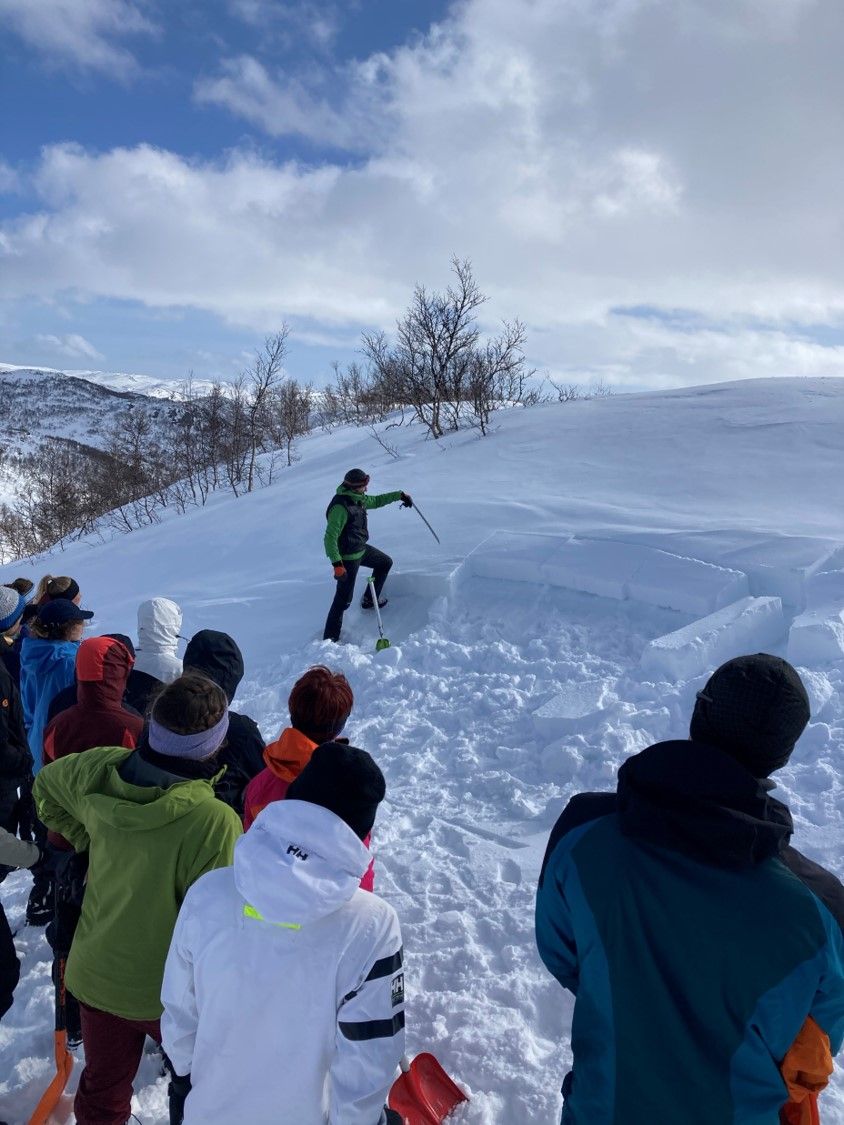
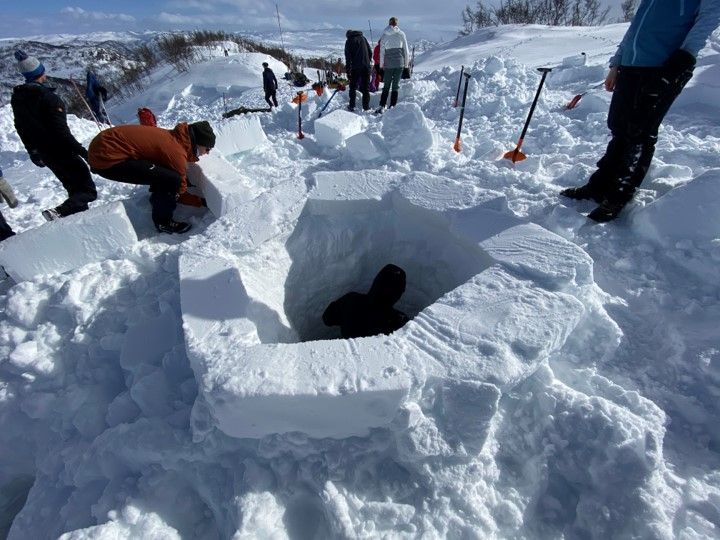
After the roof is finished, the most exhausting and time-consuming part comes, because now the small hole from the inside has to be enlarged so that six people can sleep in it. Especially at the beginning, when it's still very tight and dark in the hole and I don't fully trust the ceiling, it's a bit uncomfortable. We also constantly take turns shoveling. In the end, we stick a ski pole through the roof to ensure air circulation. We also mark the entrance of our igloo with all our skis and provide shovels both inside and outside so that if our igloo were to collapse during the night, we could be found and try to dig ourselves out. In total, it takes six hours of work to finish the snow cave - and I am finished too.


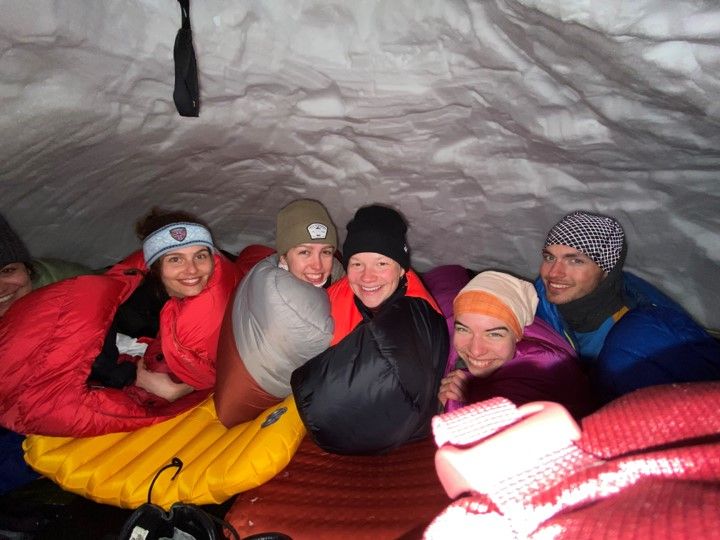
Climbing peaks, avalanche danger, and building emergency shelter
On the next morning, we pack up our shelters and drive back to the accommodation. There, we pack up all our stuff, take a shower, eat something, and then in the early afternoon, we are back on the bus to Kristiansand. We will probably spend the weekend washing our things and going shopping because next week is Easter vacation and Maike and I want to drive by car to Bergen and to the Sognefjord, the deepest and longest fjord in Norway.
You will find out more about my Easter vacation trip to Bergen in the next post!
Until then, Sara
订阅时事通讯
回答
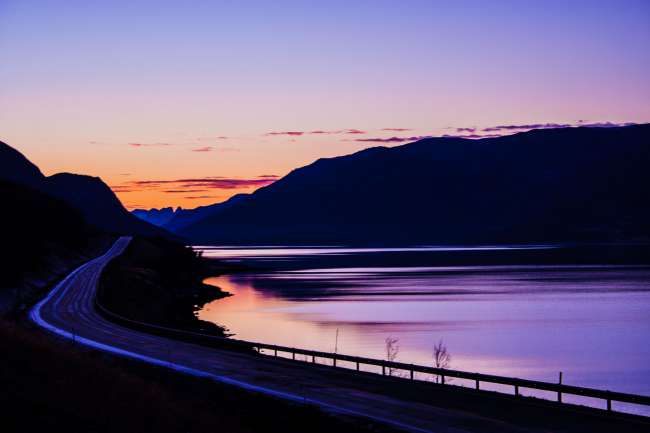
旅行报告挪威
